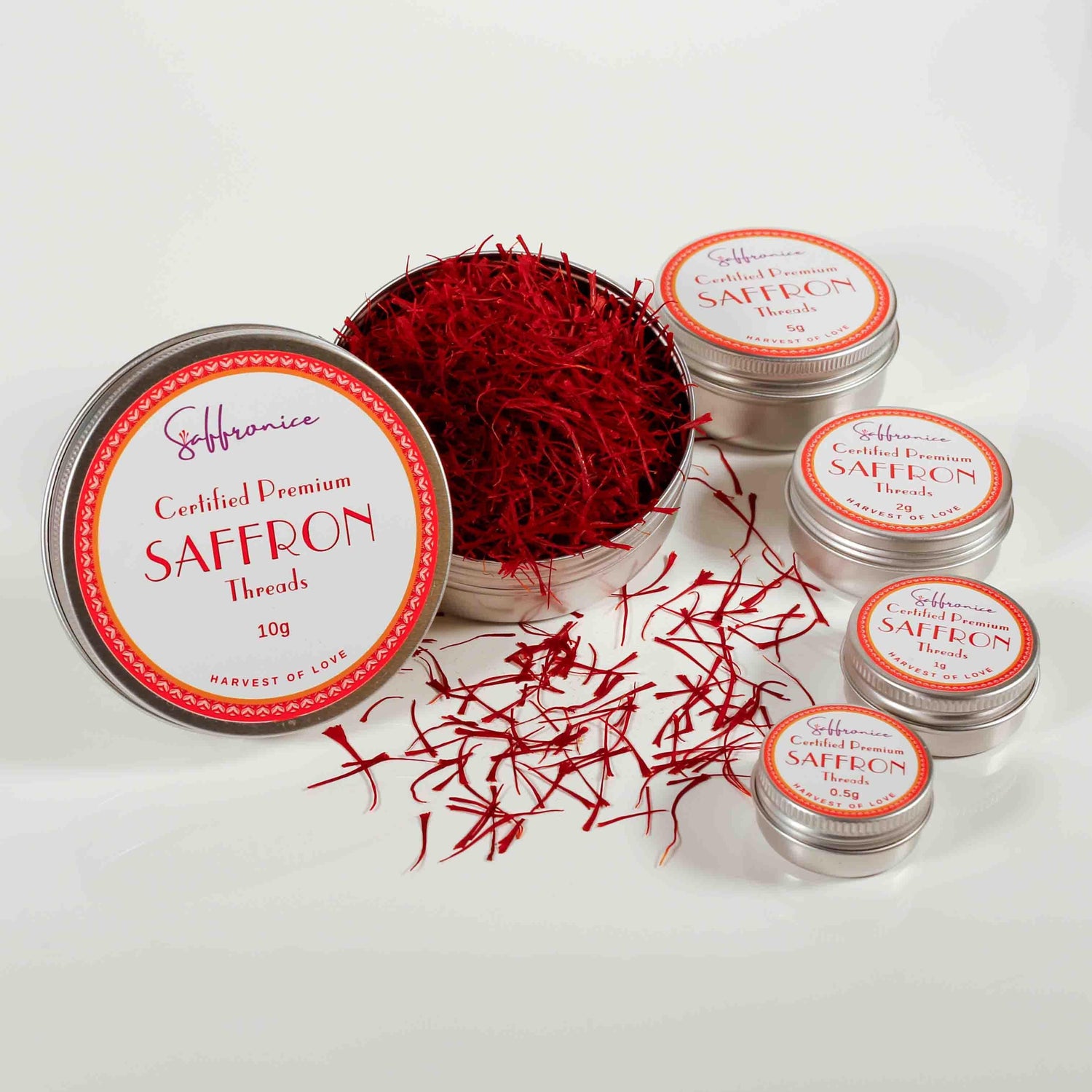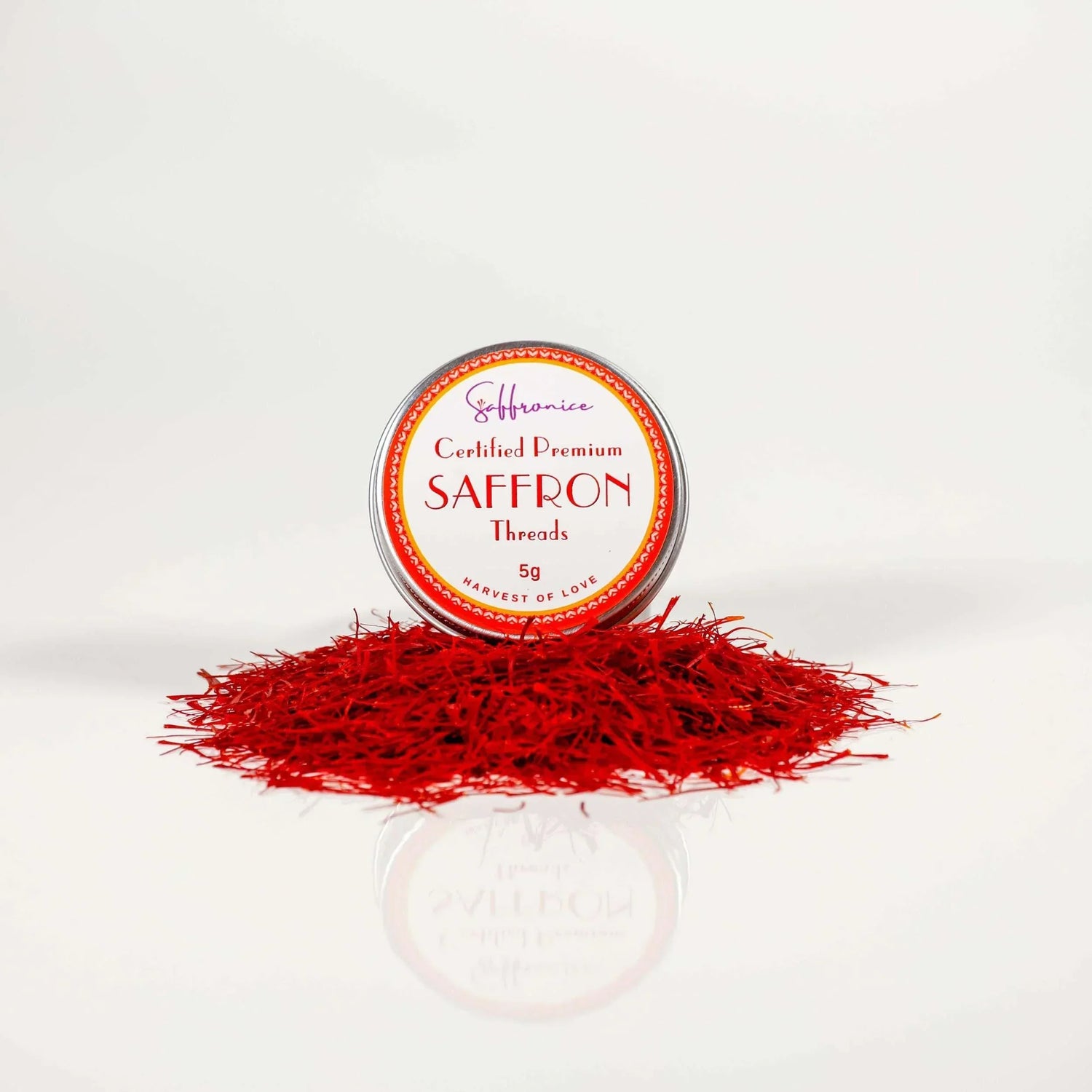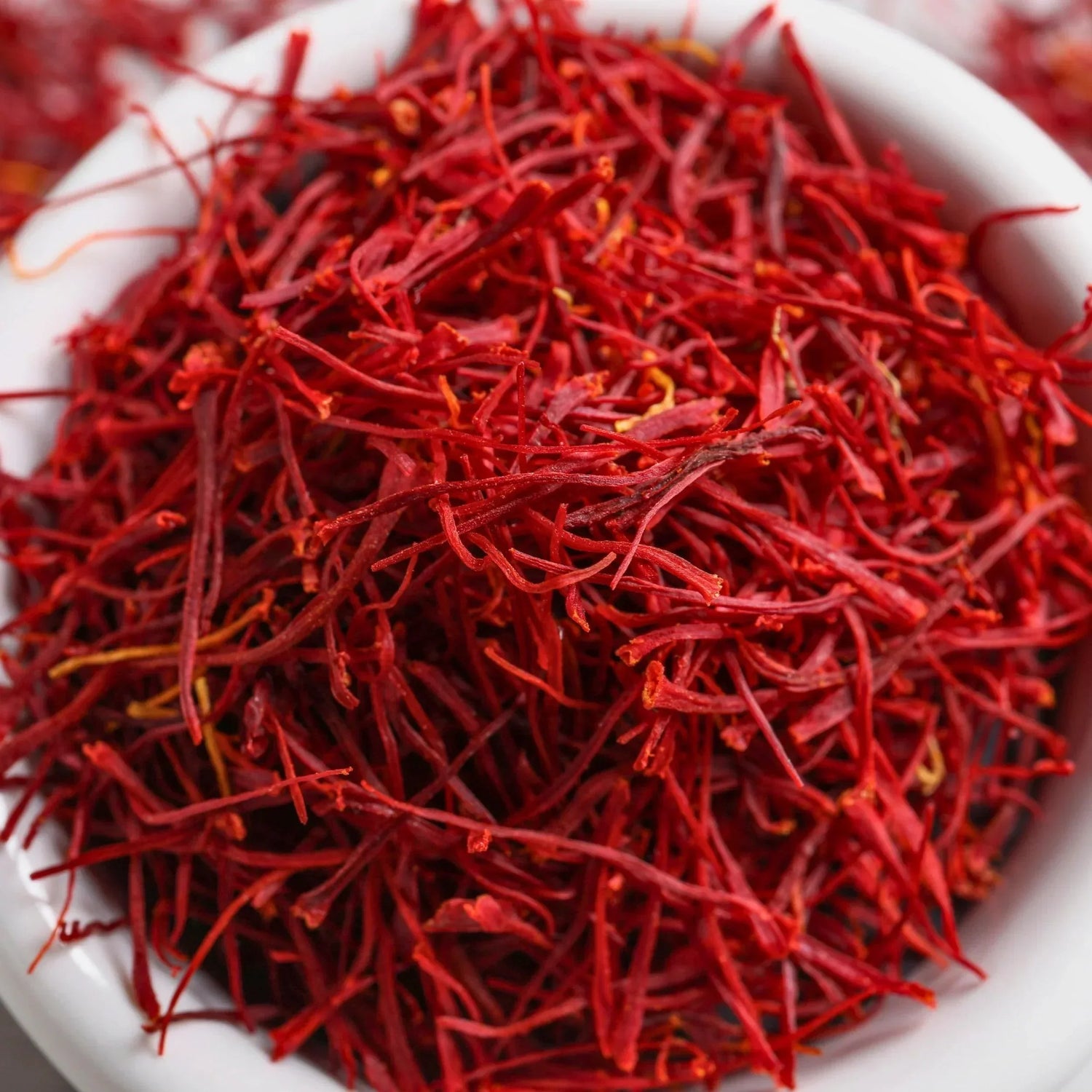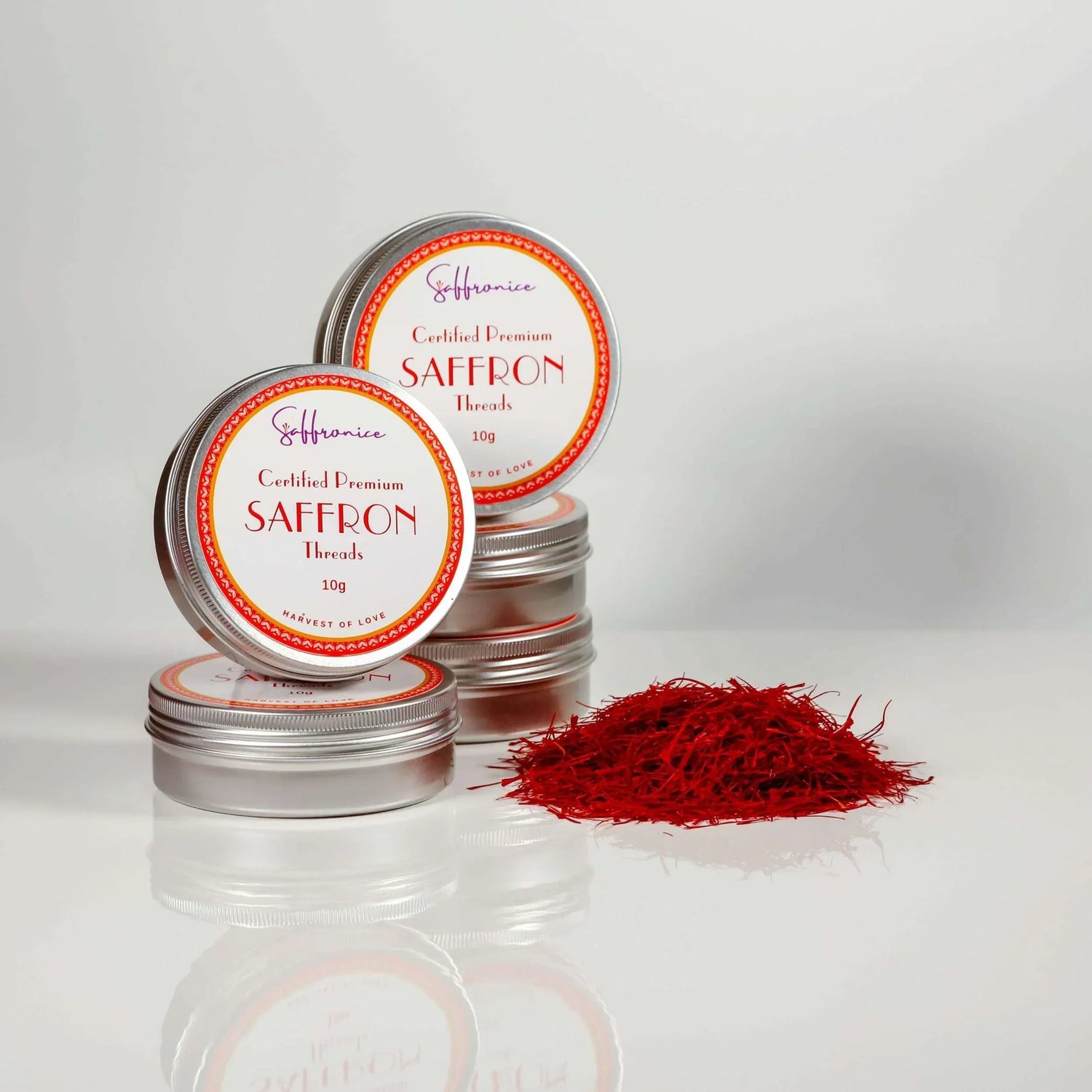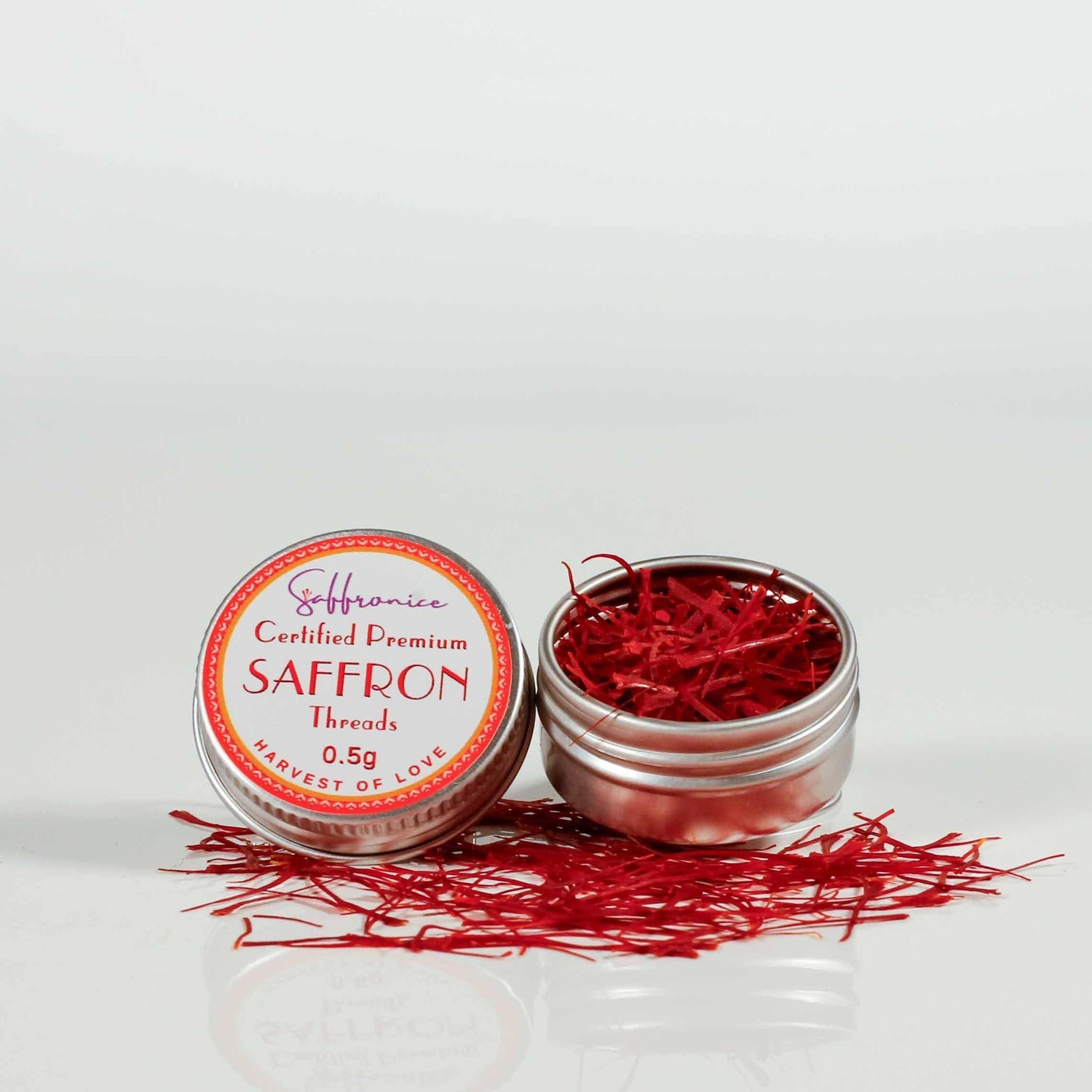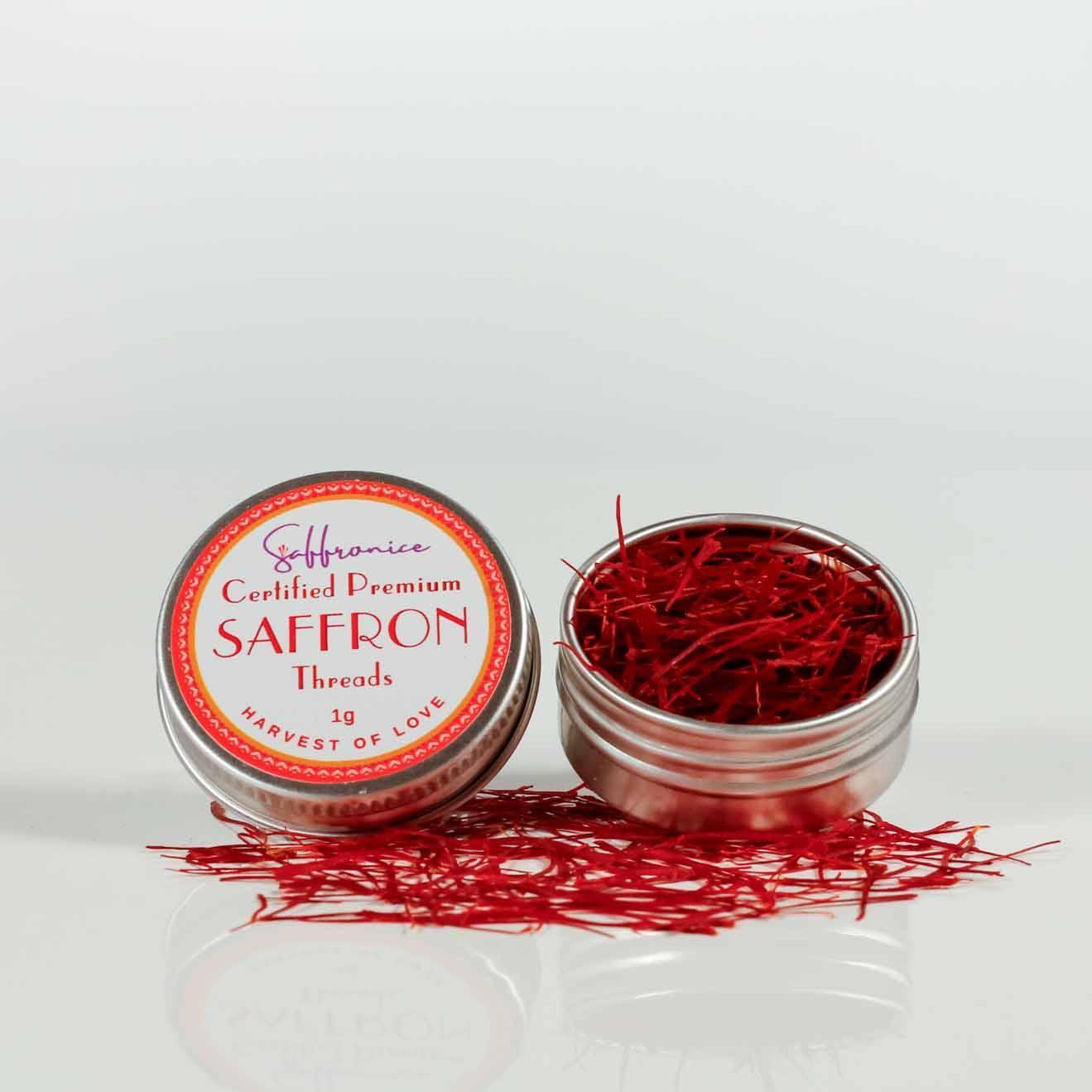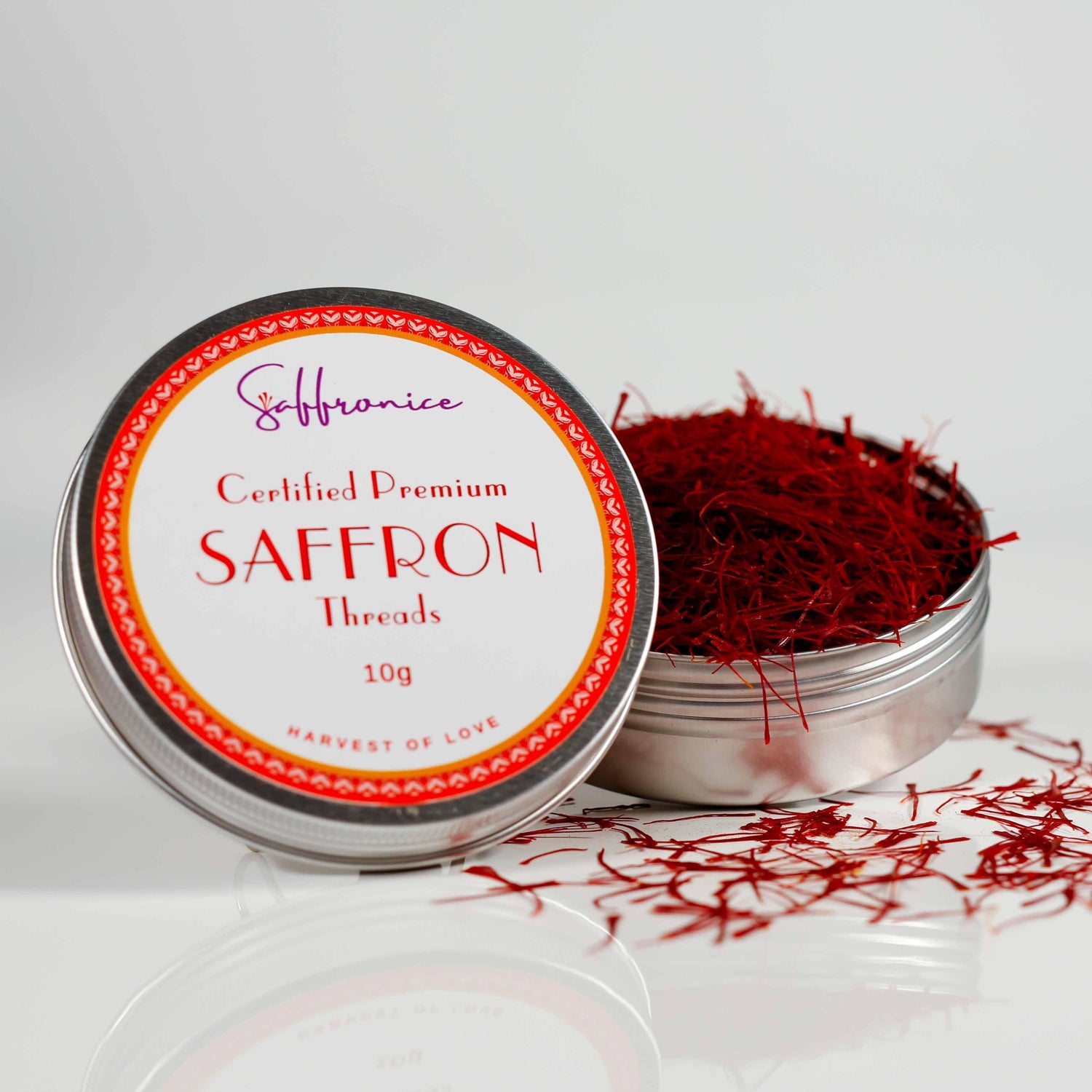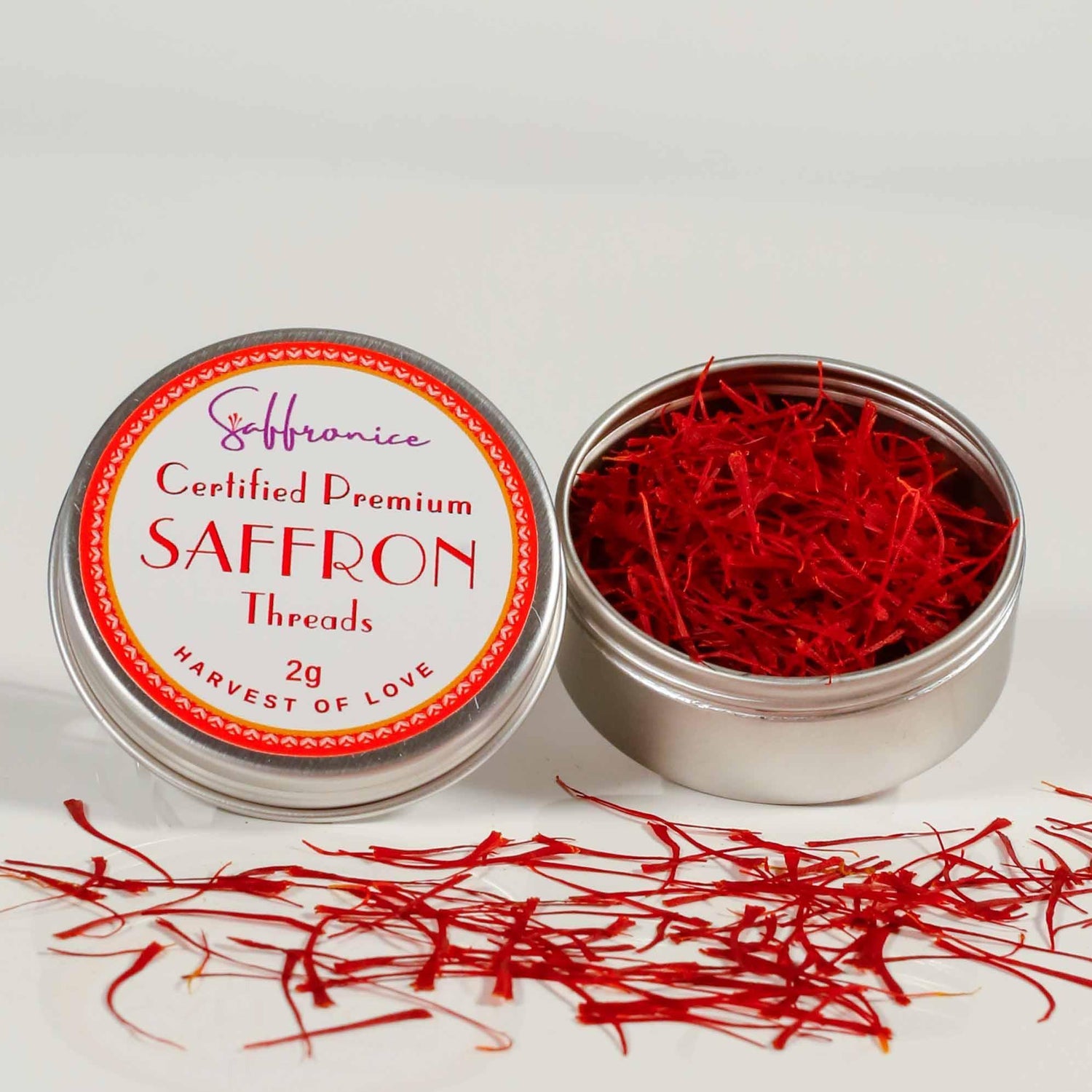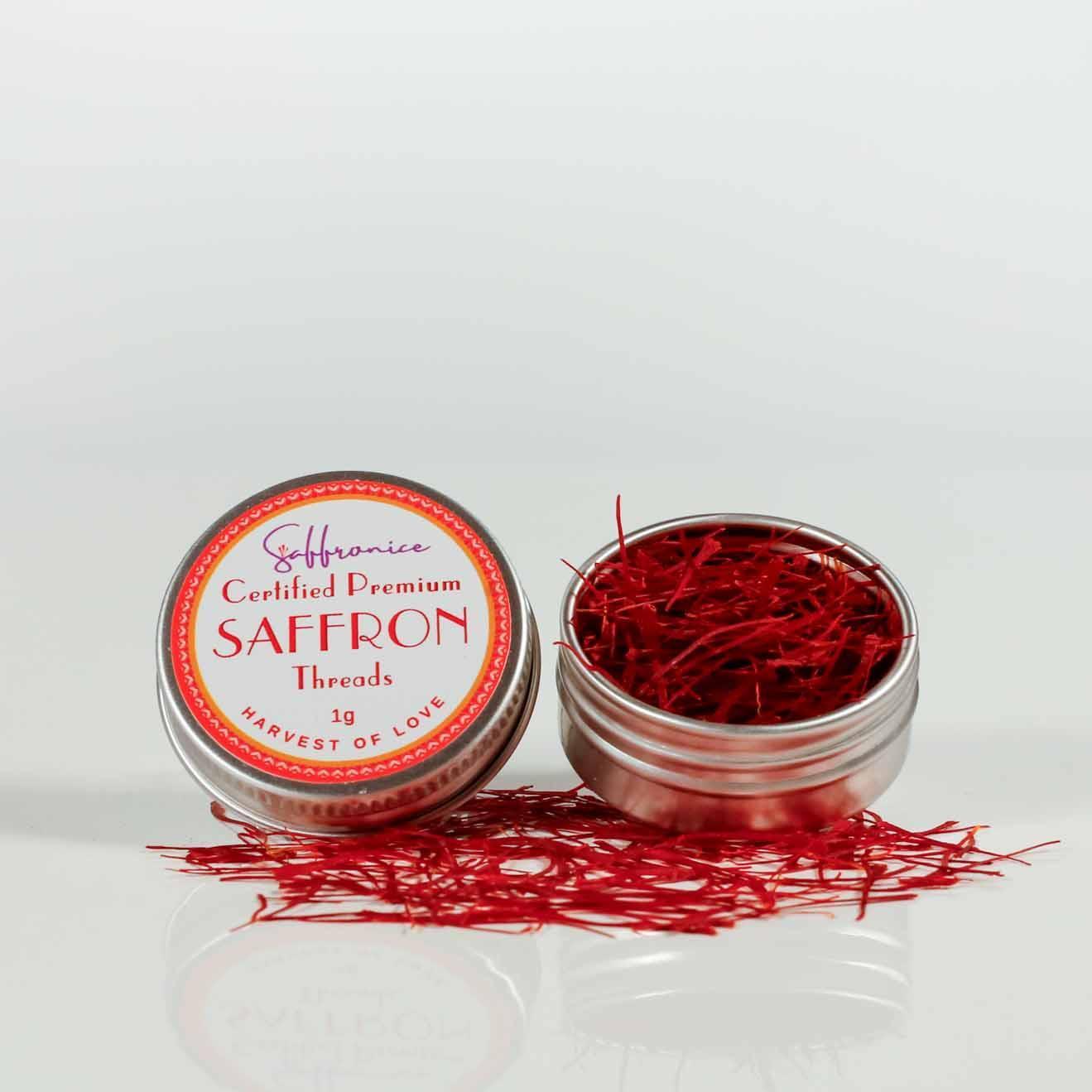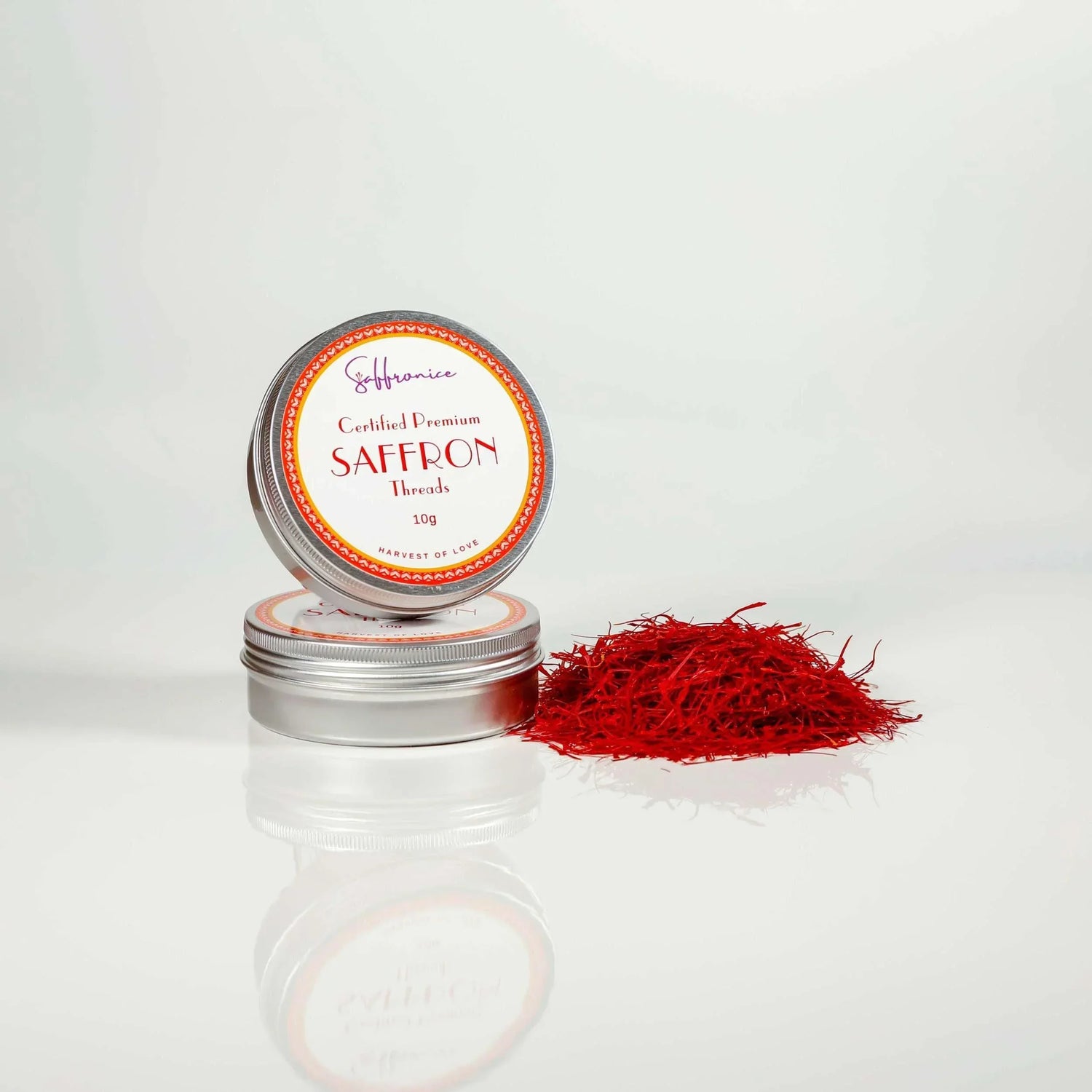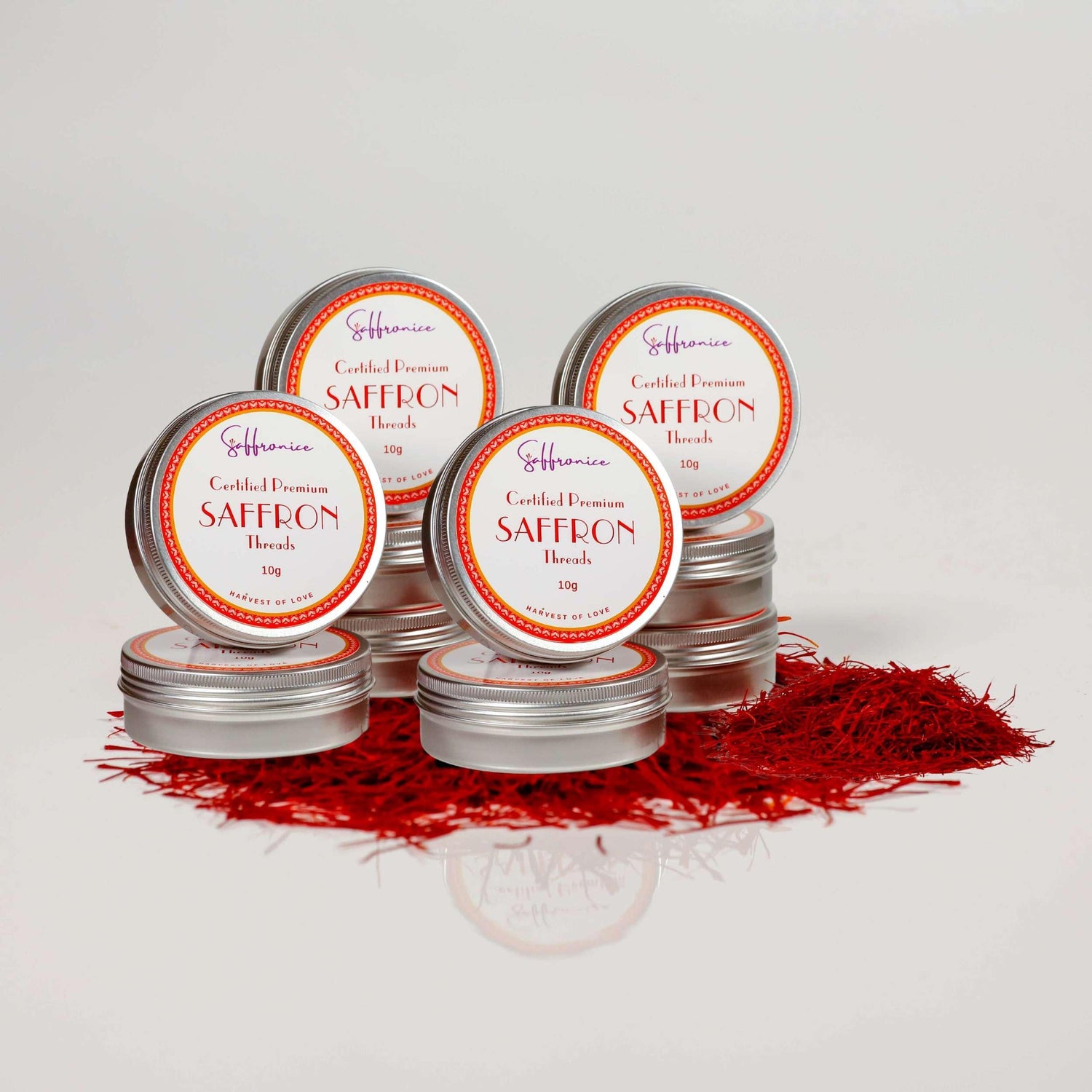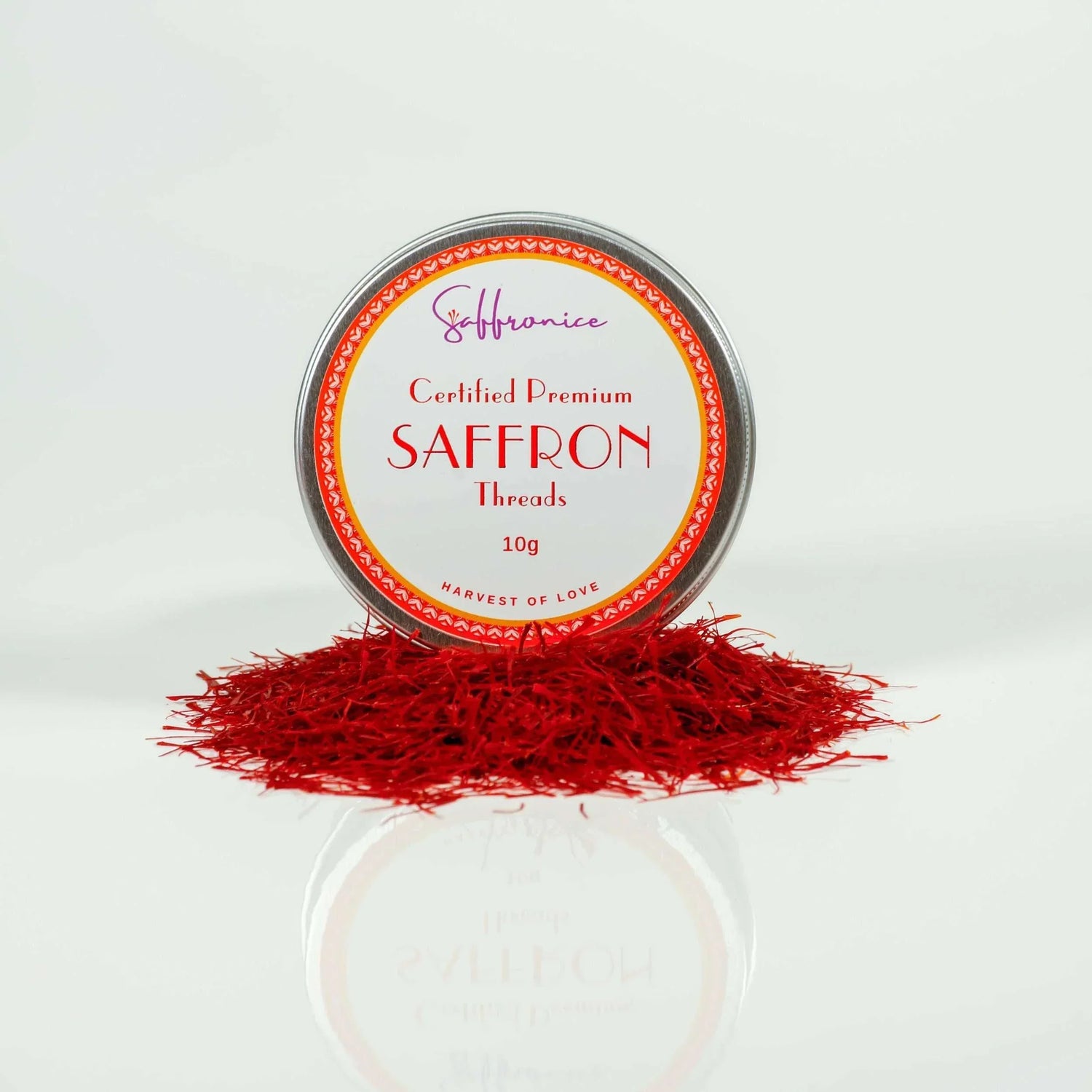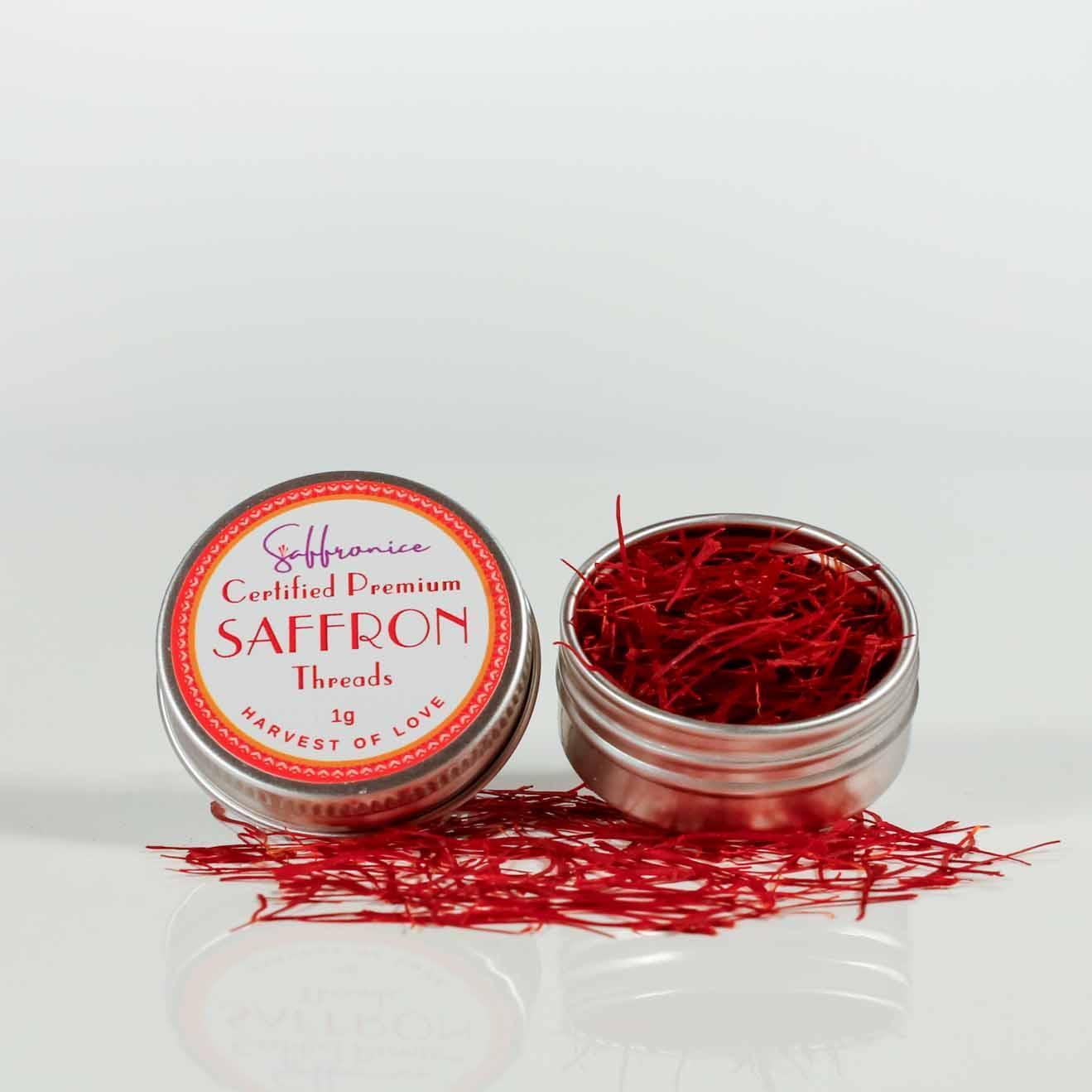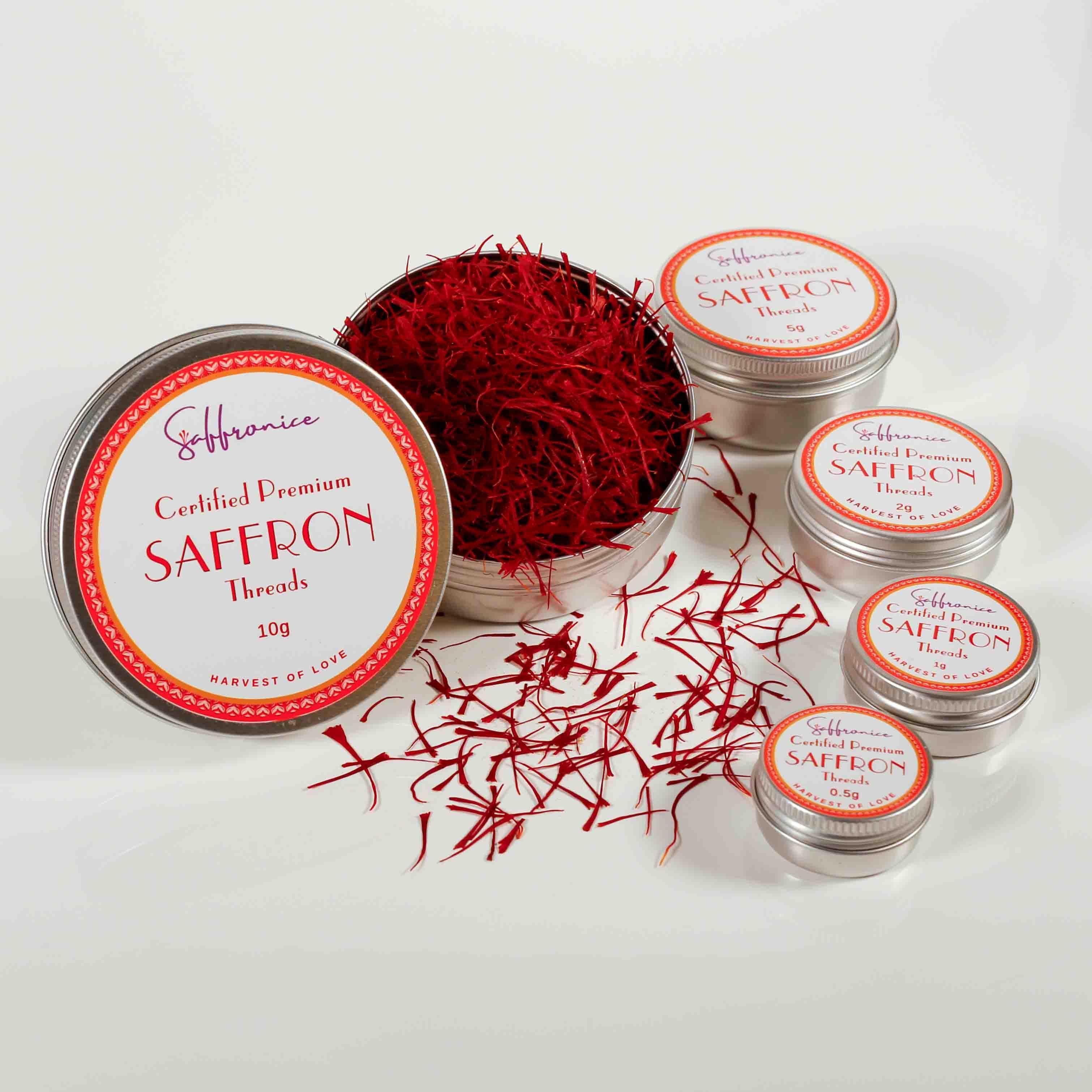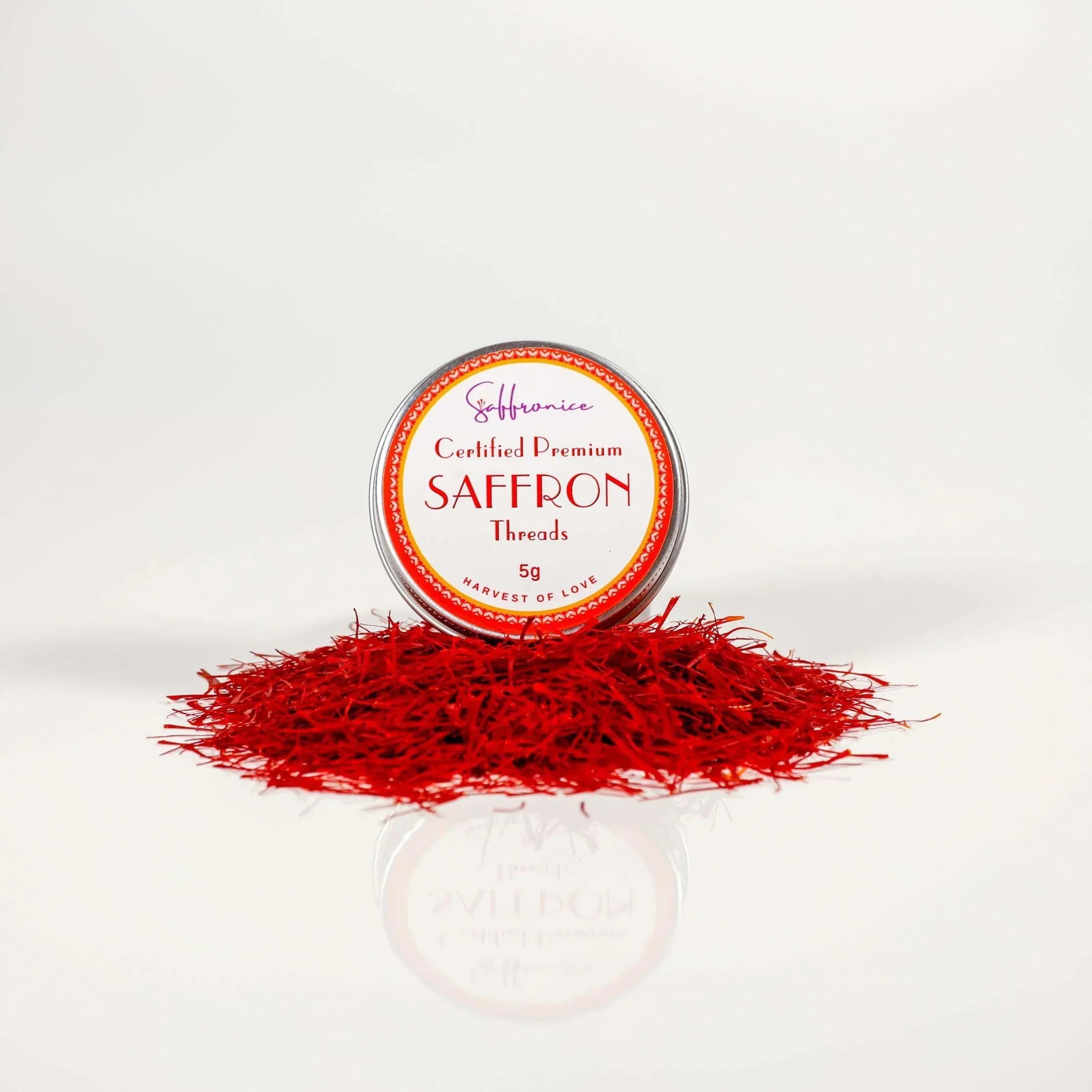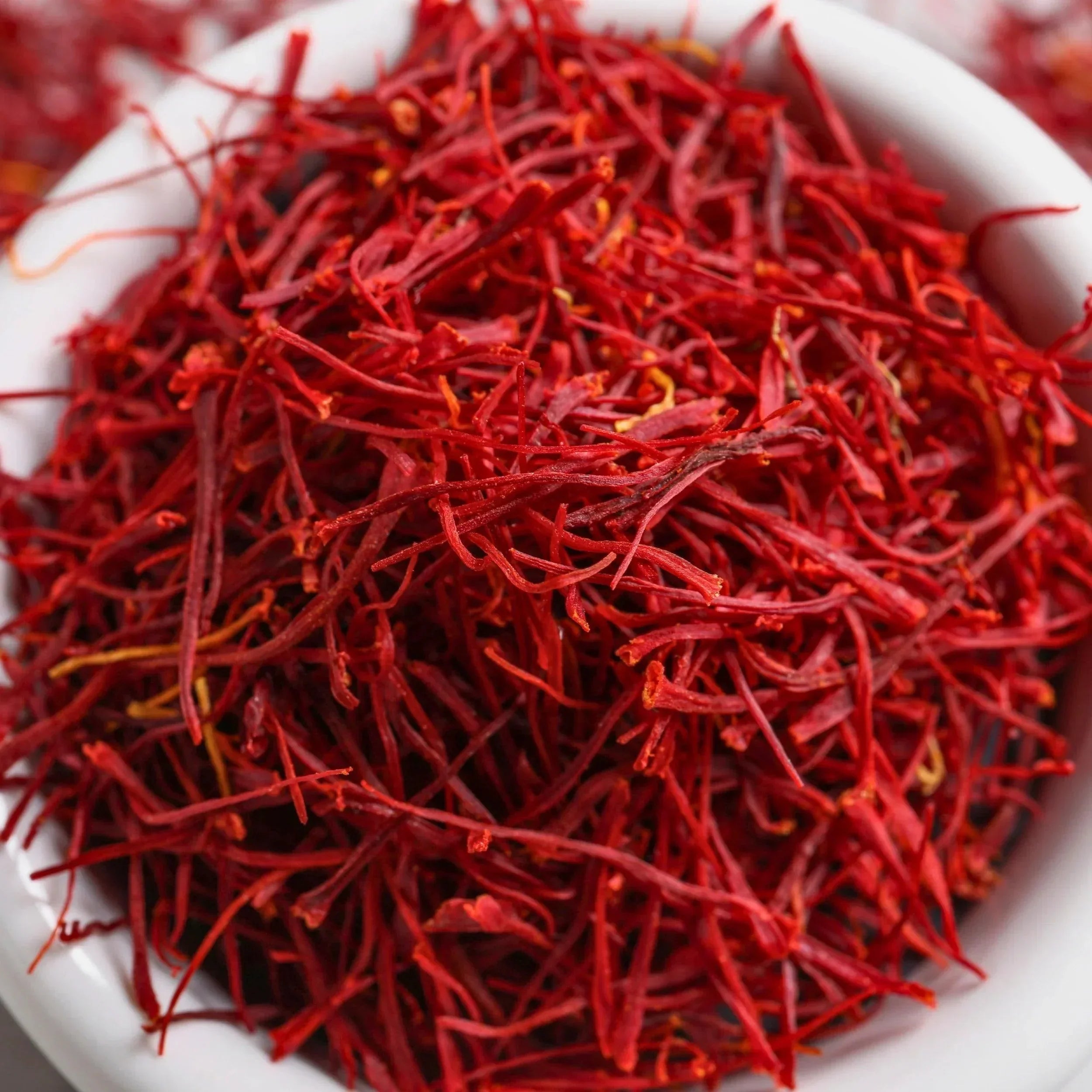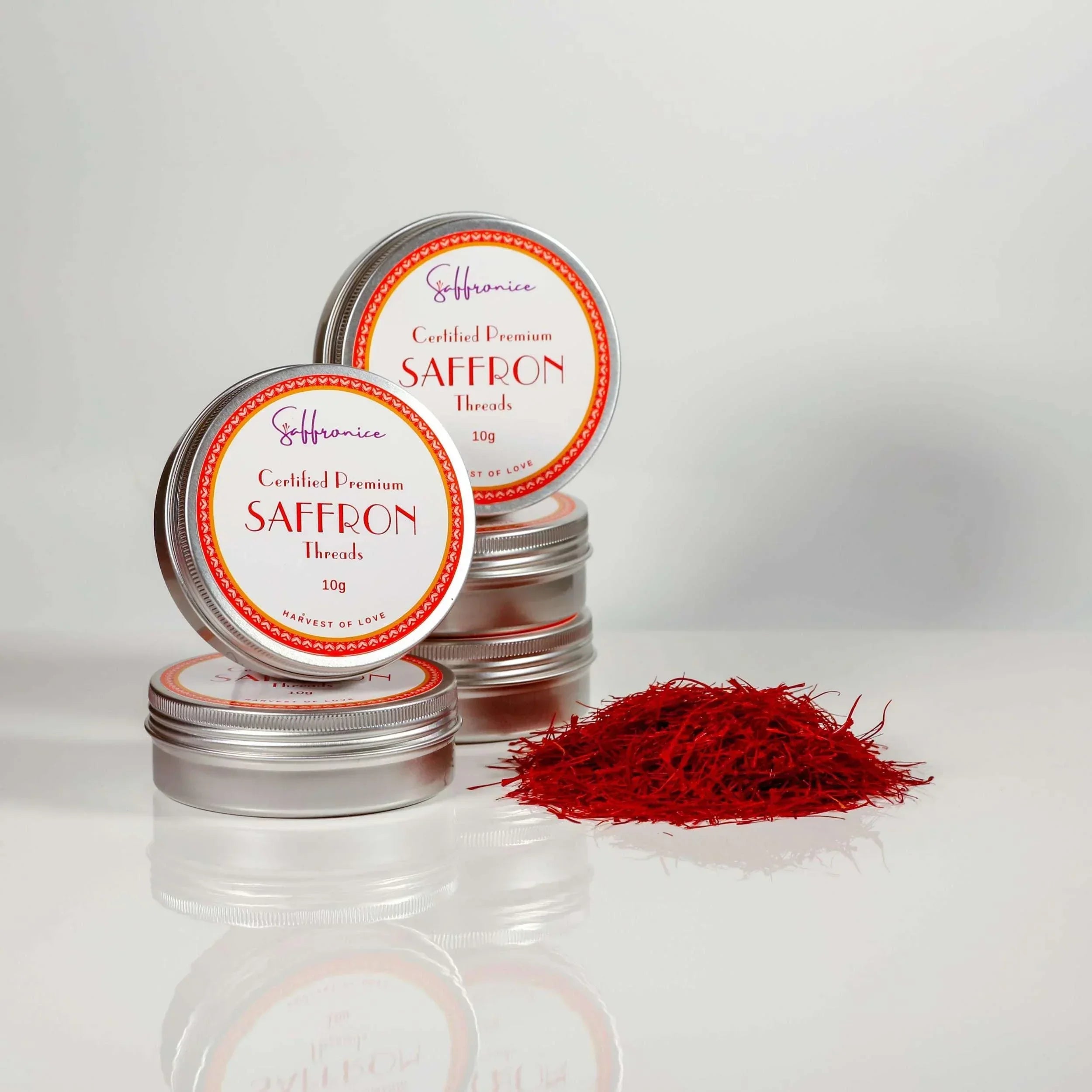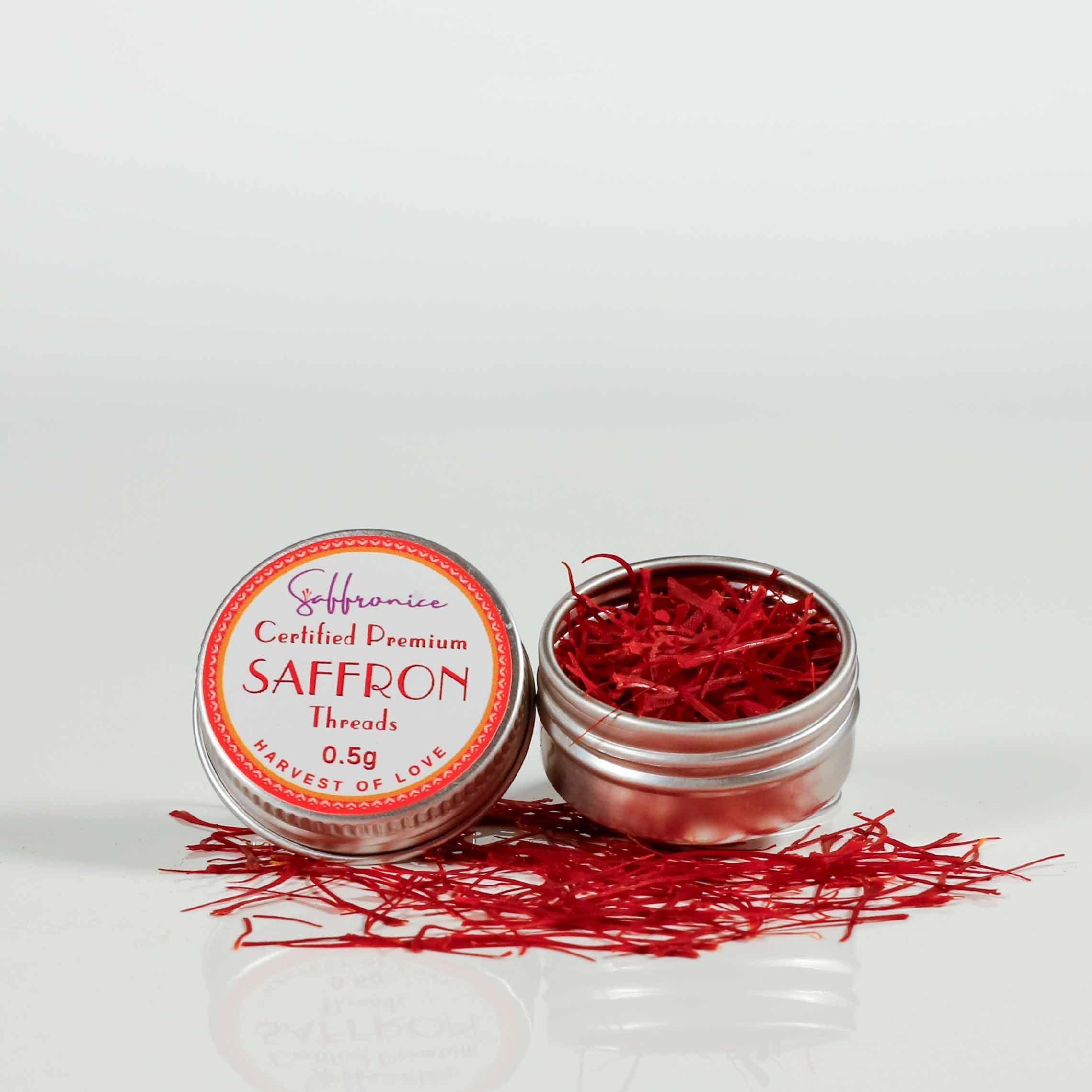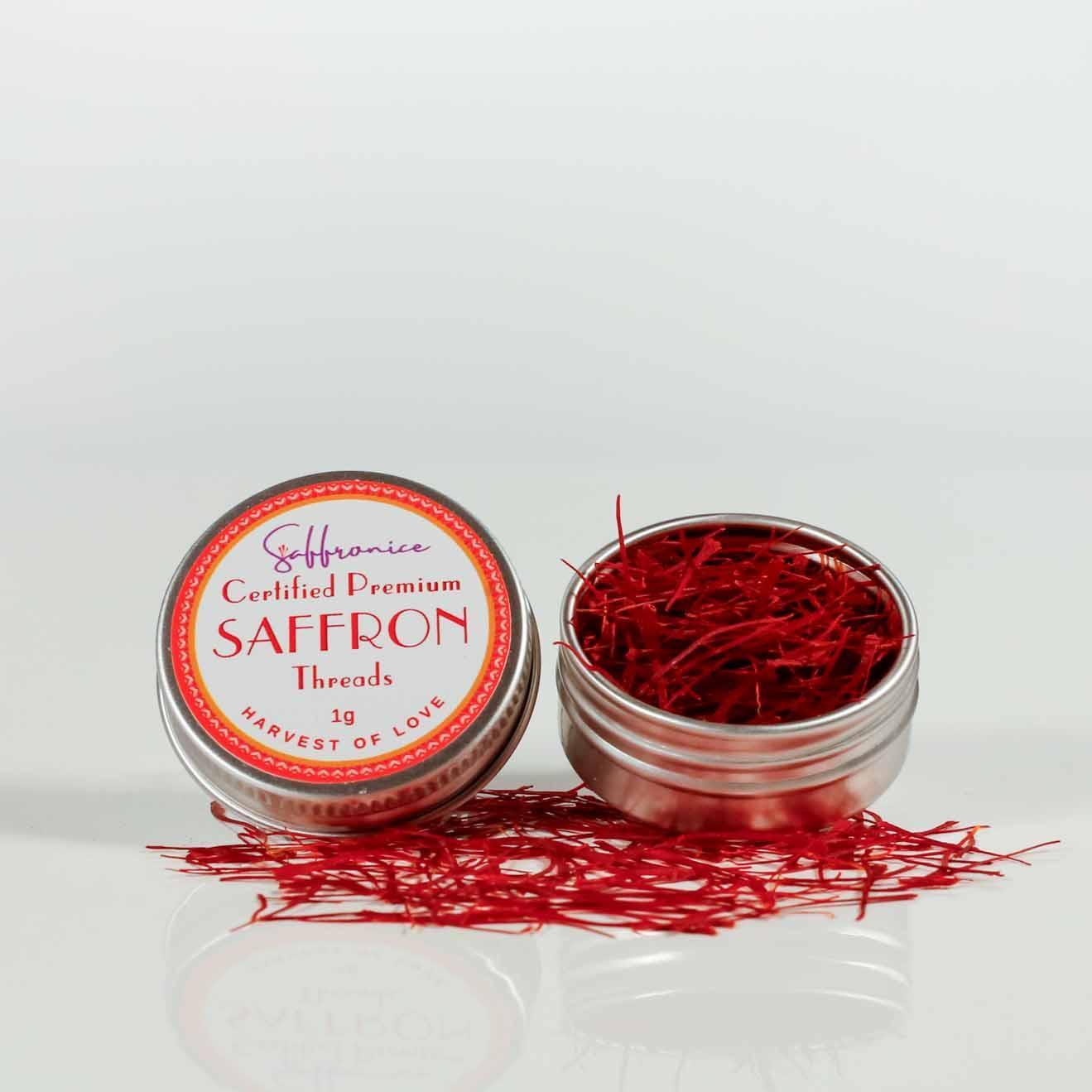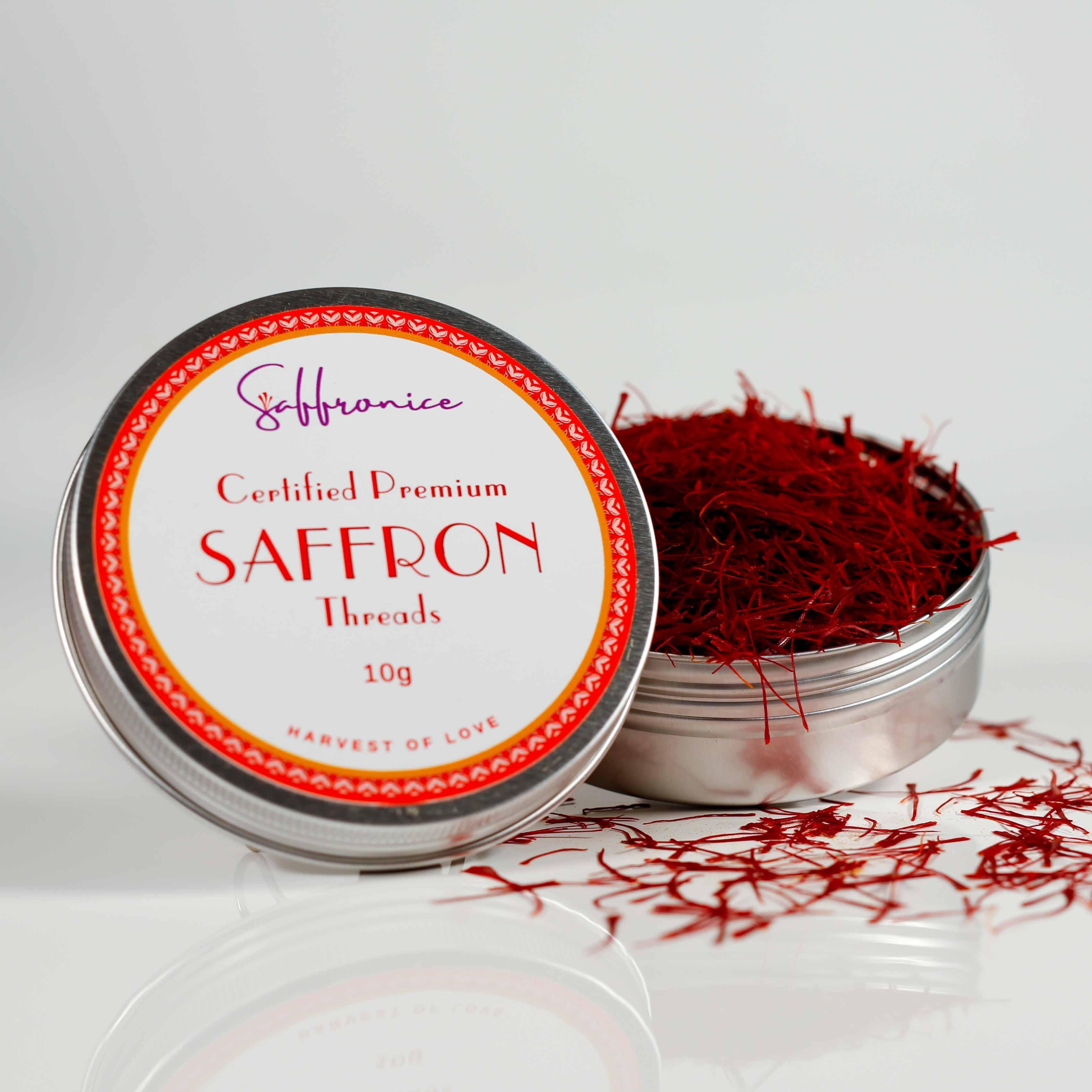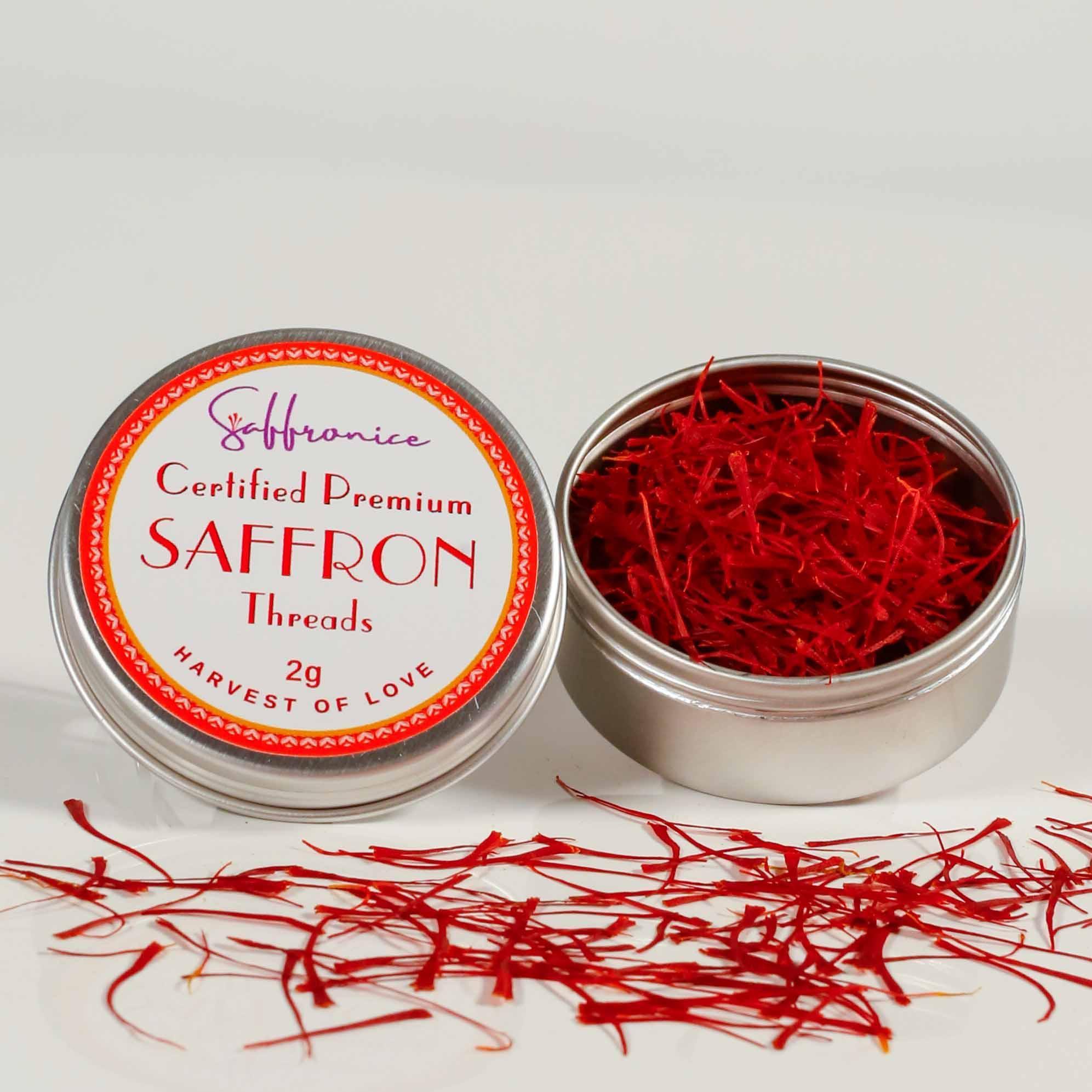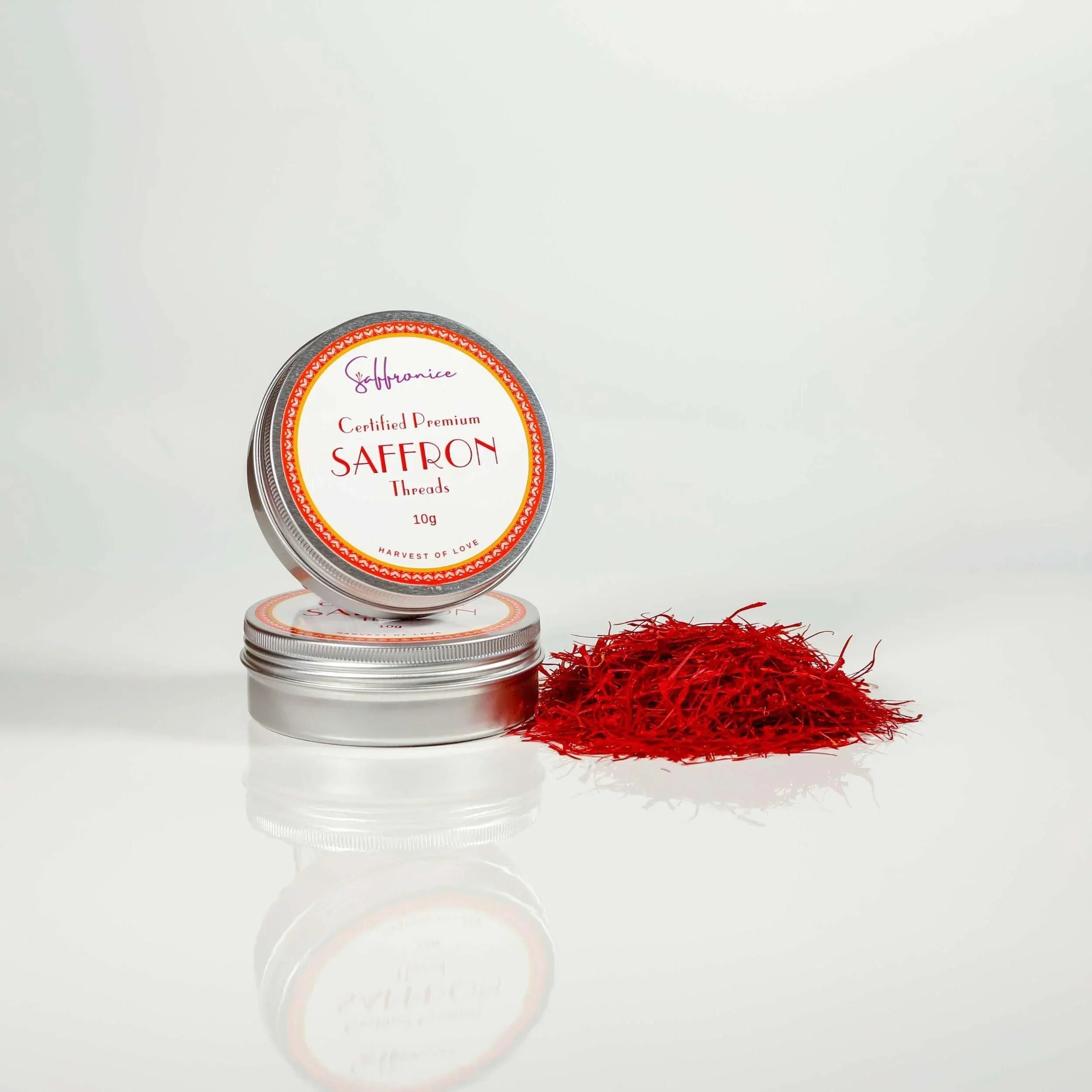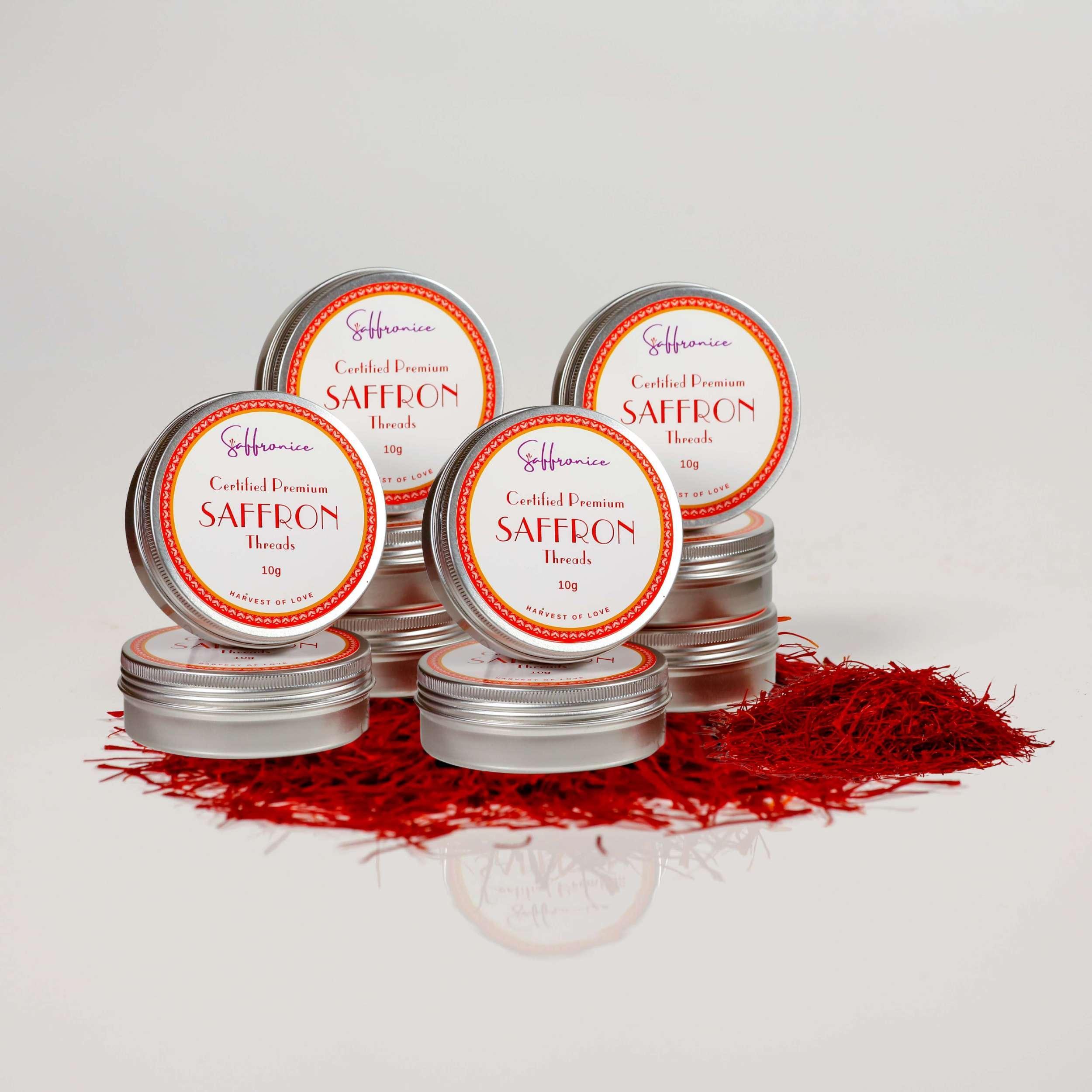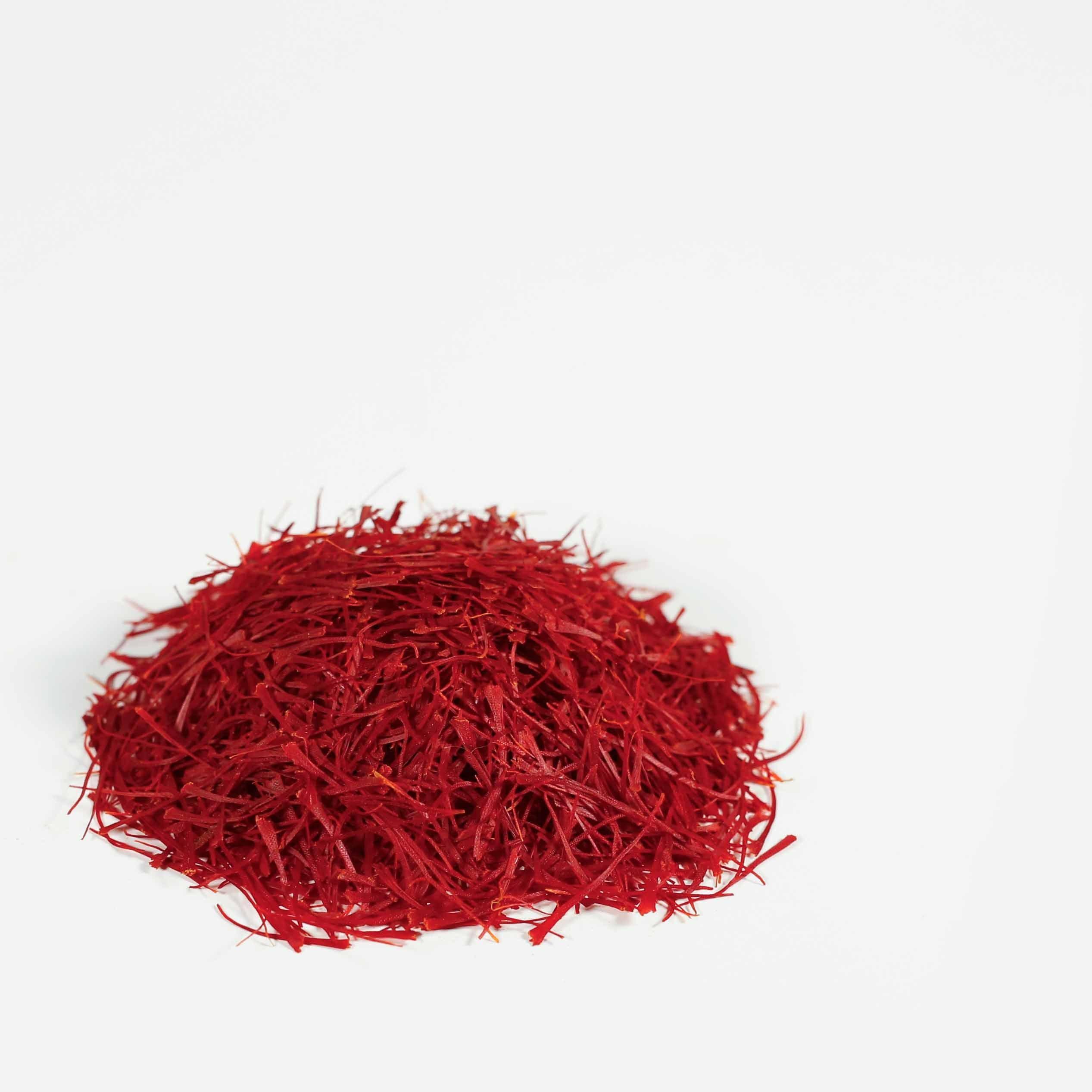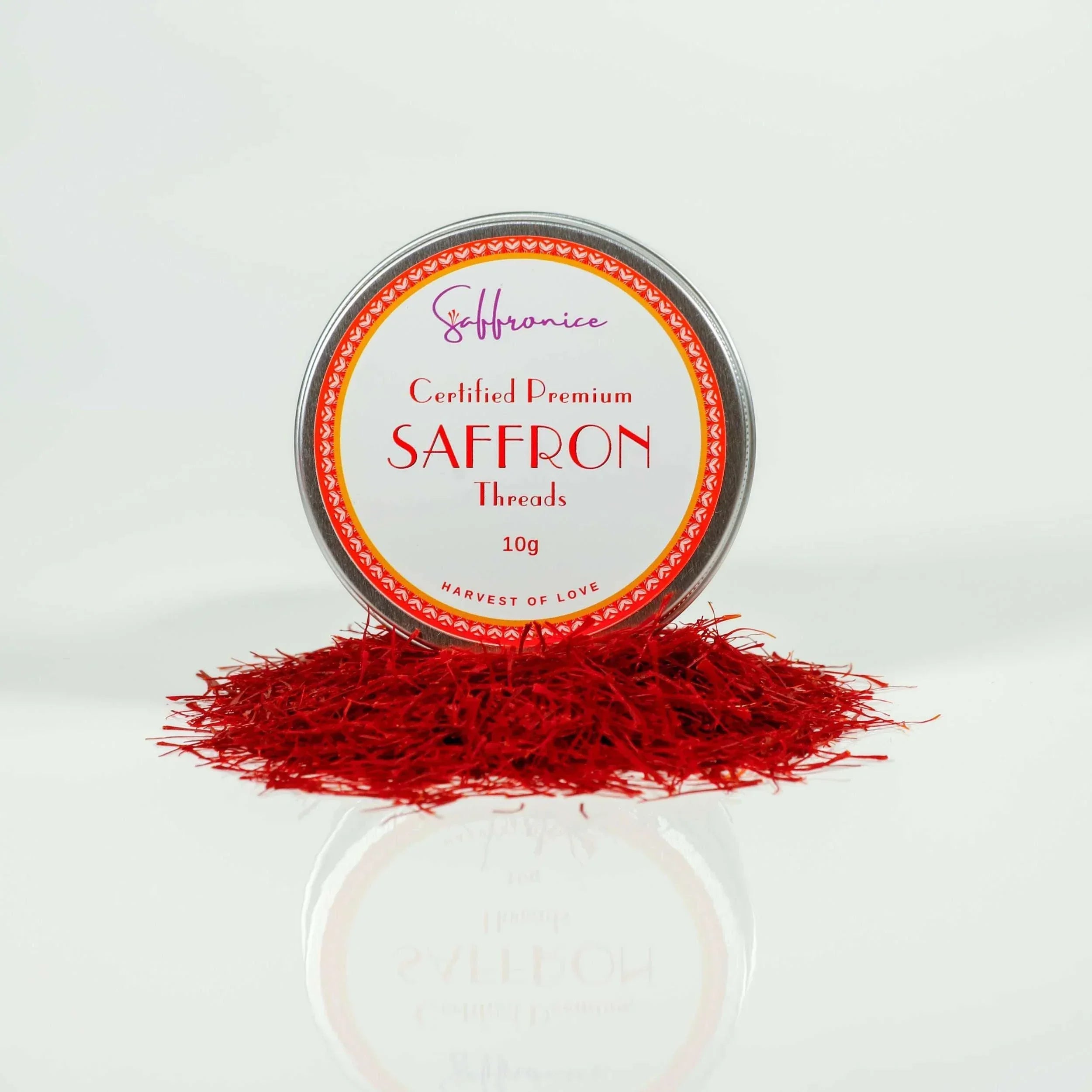Finding the Best Saffron in the World
Update: The Best Saffron Brands 2025 is now available.
Hello! We're Alex and Matty Zar, founders of saffronice.com. Our journey in the world of herbs and spices led us to a fascination with saffron and other unique products like Date Seed Coffee and Vanilla. My background in Iranian cuisine and culinary adventures in the USA and Australia, coupled with Matty's scientific expertise and medical studies in Europe, fuels our passion for saffron. We're committed to guiding customers in recognising genuine, high-quality saffron and sharing our knowledge to help you make informed choices. This article draws from our six-year experience as saffron merchants, aiming to enlighten saffron enthusiasts and newcomers.

The Essence of Quality Saffron
Defining Quality in Saffron:
When it comes to saffron, the gold standard of quality is not just a metaphor; it's a reality deeply rooted in its aroma, colour, and flavour. Identifying high-quality saffron involves a sensory journey as rich as the spice itself.
Aroma: The first sign of premium saffron is its aroma. High-quality saffron exudes a robust and distinct fragrance that mixes sweet, floral, and earthy notes. This potent aroma is a telltale sign of fresh, well-preserved saffron.
Colour: The colour of saffron is its most visible indicator of quality. The best saffron in the world boasts a deep, vibrant crimson. It's not just pleasing to the eye; the colour intensity reflects the concentration of crocin, an essential compound responsible for Saffron's colouring strength and medicinal properties.
Flavour: The flavour of saffron is as complex as its aroma. It should strike a perfect balance between subtly sweet and slightly bitter. This complexity is what makes saffron an unparalleled spice in culinary applications.
Saffron quality standards and ISO certifications
Beyond these sensory qualities, saffron quality is also measured by standards and certifications. The ISO (International Organization for Standardization) provides specific criteria for grading saffron based on factors like moisture content, foreign matter, and floral waste content. ISO 3632 is the particular standard used to classify saffron into grades based on its colouring strength, aroma, and flavour profile. These grades help consumers and chefs determine the quality and authenticity of the saffron they purchase.
At Saffronice, we adhere strictly to these standards, ensuring that every thread of saffron we offer not only delights the senses but also meets the highest quality benchmarks set by international standards. This commitment to excellence drives our passion for providing our customers only the best saffron in the world.
Understanding Saffron Grades

Saffron's grade and quality is categorised into five primary grades, each with unique characteristics:
-
Negin (Grade 1): Renowned for its vibrant colour and long threads, this top-tier saffron is known for its strong aroma and intense flavour. Primarily used in culinary dishes, it is handpicked and represents the finest part of the saffron stigma.
-
Sargol (Grade 2): Although slightly shorter in thread length than Negin, Sargol maintains high quality with its deep red colour and rich flavour, making it suitable for cooking and medicinal use.
-
Pushal (Grade 3): Characterised by whole strands with attached yellow or orange styles, Pushal offers a milder flavour and is ideal for recipes where the appearance of the saffron threads is less critical.
-
Dasteh (Grade 4): This grade includes the complete thread, both the yellow/orange styles and red stigmas, bundled together. It's less visually striking but still adds significant flavour and colour to dishes.
-
Style (Grade 5): Comprising primarily the yellow or orange part of the thread, this grade is often used in pharmaceuticals for its beneficial properties, minus the intense colour.
Best Saffron Selection Process
At Saffronice, we go beyond just evaluating the thread's length. Our selection process incorporates a range of scientific criteria to guarantee superior quality. We prioritise non-GMO saffron bulbs and favour natural drying methods over industrial ones to preserve the Saffron's flavour and aroma. Freshness is also key; we source saffron from the current season to ensure potency. Our approach is holistic, considering not just the visual aspects but the overall taste, aroma, and medicinal qualities, thus ensuring our customers receive only the finest saffron.
Determination of Saffron Quality through a Multi-Analytical Approach
Modern Harvesting Techniques and Emerging Saffron Producers

Advancements in Machinery:
In the realm of modern saffron production, technological advancements have led to the development of machinery capable of separating the saffron stigmas from the petals. This mechanisation has significantly increased efficiency, particularly for larger producers who handle vast quantities of saffron.
Changes in Harvesting Schedules:
Unlike traditional methods, where harvesting is done early to protect the delicate stigmas, larger producers have shifted to harvesting throughout the day. This change is primarily driven by labour costs and the need for increased production efficiency. However, this deviation from traditional practices can impact the quality of the saffron, particularly in terms of its potency and flavour.
Dehydration Techniques:
The use of large dehydrators in the drying process of saffron is another modern technique. While these dehydrators can expedite the drying process, there's a risk of overheating, which can damage the bioactive components of saffron. While the resulting product may still be suitable for culinary purposes, its efficacy for medicinal use could be compromised.
Emerging Saffron Producers in Non-Traditional Regions

The global demand for saffron has led to its cultivation in countries where it was not traditionally grown. However, despite their efforts, countries like the United States, Australia, and South Africa often struggle to produce saffron that meets the highest quality standards, including those set by ISO. The primary challenge lies in the climate, as saffron requires specific conditions to thrive and develop the optimal balance of flavour, aroma, and colour.
Traditional Saffron Harvesting Methods: A Precious Legacy
In traditional saffron cultivation, saffron bulbs are treasured, often passed down through generations as a family heirloom, underscoring the spice's preciousness. Harvesting involves handpicking flowers in the early morning before they fully open, which is crucial for preserving the stigmas' quality. After harvesting, drying is done at room temperature, shielded from light and heat to protect the Saffron's delicate components. Storage is equally traditional, favouring metal containers or cotton bags over plastic or glass to prevent UV light exposure. These time-honoured methods, passed down through generations, ensure the purity and essence of saffron are maintained at their highest quality.
While modern methods and the expansion of saffron cultivation to new regions have increased production, they often face challenges in matching the quality achieved through traditional practices and ideal growing conditions.
Global Saffron Varieties: A Comparative Analysis

-
Iranian Saffron:
Iranian saffron, with a rich history stretching over 3500 years, is a testament to the perfect harmony of nature's gifts - the right balance of sun, fertile soil, and water from underground lakes. This unique combination makes Iran a leading producer, accounting for over 97% of the world's saffron supply and exporting hundreds of tons globally, with Spain and the USA being notable buyers.
The distinctiveness of Iranian saffron lies in its exceptional concentration of critical compounds. Laboratory tests reveal its high levels of Crocine, safranal, and picrocrocin. On average, Iranian saffron boasts a Crocine content between 220 and 300 nm on a dry basis, surpassing the ISO standards, which range from 140 for lower quality to 220 for higher quality. Similarly, its safranal and picrocrocin levels exceed the typical ISO ranges, contributing to its robust aroma, deep red colour, and hallmarks of its premium quality.
Distinguishing Real Persian Saffron
Identifying genuine Iranian saffron is a sensory experience. The first clue is its potent aroma, distinctly more pronounced than other varieties. Visually, its colour is a deep, intense red, with hardly any yellow threads, resulting from meticulous hand separation. In contrast, saffron from other regions often includes yellow parts to increase weight and generally presents a more orange hue. These characteristics make Iranian saffron not just a spice but a luxurious experience known for its superior smell and appearance.
-
Spanish Saffron
Spanish saffron, once a cornerstone of the country's agriculture, has seen a significant decline in production due to factors like climate change, rising living costs, and increased labour expenses in Europe, particularly in Spain. According to The Guardian, Spain's saffron production plummeted to less than 500kg in 2022, starkly contrasting the 70 tonnes produced annually during the 1970s. Currently, about 140 hectares, mainly in Castilla-La Mancha, are dedicated to saffron cultivation, yielding around 450kg in 2022.
Recently, much of what is labelled as Spanish saffron has actually been sourced from Iran. This practice has become standard due to the limited local production and the high quality of Iranian saffron.
Comparison of Spanish and Iranian Saffron
Spanish saffron is categorised into four grades:
-
Coupe (Class 1): The highest quality, featuring deep colouring and intense flavour.
-
Mancha (Class 2): Known for its good colouring strength and robust taste.
-
Rio (Class 3): A lower grade with moderate quality.
-
Sierra (Class 4): The least potent, often used for basic culinary purposes.
Given the limited production in Spain, genuine Spanish saffron, especially the higher grades like Coupe and Mancha, can be exceedingly expensive. Consumers should be cautious, as most saffron sold under the Spanish label might be of lower quality Iranian origin unless it is directly sourced from a Spanish farm or producer. The small production volume in Spain has inadvertently led to this blurring of origins in the saffron market.
-
Indian Saffron:
Cultivation Differences in Saffron from India and Iran
Indian saffron, primarily cultivated in the Kashmir valley, stands out in the global saffron landscape with its unique cultivation practices and the distinct environmental conditions in which it thrives, differentiating it from Iranian saffron.
Geographical and Climatic Influence: Kashmir's cooler climate and unique soil composition contribute significantly to the distinct qualities of Indian saffron. Kashmir's higher altitude and specific seasonal weather, as opposed to the arid conditions in Iran, resulted in saffron with a slightly weaker flavour profile and colouring strength.
Production Scale: India's contribution to the global saffron market is notable, with an annual production of around 25 tons. This quantity, though smaller compared to Iran's output, highlights the significant role of Indian saffron in the spice industry.
Cultivation Practices: Indian saffron farming is characterised by traditional methods handed down through generations. The cultivation is typically localised and smaller in scale compared to the large-scale production in Iran. This artisanal approach and Kashmir's climatic conditions give Indian saffron a unique position in culinary and medicinal uses.
Distinguishing Indian and Iranian Saffron: Indian saffron often exhibits a milder aroma and a subtly different flavour nuance than its Iranian counterpart. The colouring strength, while rich, varies in intensity. Despite these differences, both varieties hold esteemed positions in the global market, each celebrated for their unique attributes.
The artisanal heritage and distinctive cultivation environment of Indian saffron make it a valuable and cherished variety in the world of spices, contributing to the diversity and richness of saffron available globally.

-
Afghan Saffron:
Origins in Adversity: Afghan Saffron's journey began during the US occupation, with Iranian bulbs smuggled into Afghanistan, marking the inception of a significant agricultural shift.
Cultivation in Challenging Terrains: Despite Afghanistan's mountainous landscape, saffron found its niche in the few flat regions near the Iranian border, mirroring traditional growing conditions.
Impressive Growth: Producing around 8 tons annually, Afghan saffron showcases successful adaptation and farmer dedication, yielding high-quality spice noted for its vibrant color, rich aroma, and intense flavor.
Sustainable Alternative to Opium: Saffron farming in Afghanistan has emerged as a profitable, sustainable venture, replacing opium poppy cultivation and enhancing its global appeal.
Global Market Impact: Overcoming geographical and historical challenges, Afghan saffron has made a significant mark in the international market, contributing to the diversity and potential growth of the global saffron industry.
Despite the geographical limitations and historical challenges, Afghan saffron has established a strong presence in the international spice market, earning accolades for its quality and contributing to the diversification of global saffron sources. This growth in production and recognition highlights the potential of Afghan saffron as a critical player in the industry.
-
Greek Saffron:
Greek saffron, also known as Krokos Kozanis, is renowned for its exceptional quality due to the organic farming practices prevalent in Greece. This meticulous cultivation approach contributes significantly to Greek saffron's unique characteristics.
Organic Cultivation: In Greece, saffron is cultivated organically, strictly following natural farming methods. Using chemical fertilisers or pesticides is avoided, ensuring the purity and natural essence of the saffron. This commitment to organic practices enhances the quality of the saffron. It aligns with the global trend towards sustainable and eco-friendly agriculture.
Geographical Advantage: The saffron-growing region of Kozani, with its specific microclimate and rich soil, plays a crucial role in cultivating Greek saffron. These favourable conditions, combined with organic farming methods, produce saffron rich in aroma, flavour, and colouring strength.
Annual Production: Greece's contribution to the world saffron market is significant, with a yearly production of approximately 5 to 7 tons. While this is relatively small compared to the leading producers like Iran and India, the quality of Greek saffron sets it apart, making it highly valued in the international market.
Quality and Recognition: Greek saffron is recognised for its high crocin content, responsible for its strong colouring capacity. The dedication to organic farming and the optimal growing conditions in Kozani has earned Greek saffron a Protected Designation of Origin (PDO) status, further testifying to its premium quality.
Greek Saffron's organic farming practices, advantageous geographical conditions and commitment to quality make it a distinguished and sought-after variety in the global spice market, celebrated for its purity and exceptional characteristics.

Other Notable Producers:
-
Apart from the primary saffron-producing countries like Iran, India, Spain, Greece, Afghanistan, and Morocco, several other countries contribute to the global saffron market, albeit on a smaller scale. These include:
-
Morocco: As the sixth-largest producer, Morocco cultivated 6 tons of saffron in 2019, mainly in the regions of Taliouine and Taznakht. Moroccan saffron is valued for its authenticity and flavour.
-
Italy: Italy produced 4 tons of saffron in 2019, growing it in regions like Abruzzo, Sardinia, and Tuscany. Italian saffron is prized for its quality and variety.
-
Austria, England, Germany, and Switzerland: These countries have made numerous efforts in cultivating saffron, but only select locales continue the harvest, particularly in northern and central Europe.
-
Switzerland: The small Swiss village of Mund, in the Valais canton, is noted for its saffron cultivation, with an annual output amounting to several kilograms.
-
Other Regions: Microscale cultivation of saffron also occurs in areas like Tasmania, China, Egypt, France, Israel, Mexico, New Zealand, Turkey (especially in Safranbolu), California, and Central Africa.
Though less prominent in saffron production than the leading countries, these regions contribute to saffron cultivation's diversity and global spread. Their involvement in saffron farming highlights the spice's universal appeal and adaptability to different climates and soils.
Saffron Through the Years: 2019-2024

Trends and Changes:
- Market Growth: The global saffron market has exhibited steady growth, with a Compound Annual Growth Rate (CAGR) of 2.2% from 2018 to 2022, and projections suggest a potential increase to 3.0% by 2033. This growth trajectory is influenced by evolving customer preferences, culinary innovation, health-conscious trends, and limited production capacity. Additionally, Saffron's high price, diverse applications, and global recognition have contributed to market stability and expansion.
- Innovative Farming Techniques: To counteract production challenges such as climate change and urbanisation, saffron farmers have been adopting modern techniques like hydroponics and vertical farming. These methods maximise nutrient uptake and allow year-round cultivation, overcoming traditional soil-based growing constraints.
- Demand Drivers: Increased consumer awareness and clever branding initiatives by businesses have spiked interest in saffron. Its rising popularity in functional foods, health drinks, teas, and supplements, primarily due to its antioxidant properties, has opened up new market opportunities.
Impact of Climate and Geopolitical Factors:
- Sustainable Production Demand: Consumers are increasingly seeking environmentally and socially responsible saffron production, driving the importance of ethical and sustainable sourcing techniques. The demand for organic saffron, cultivated without synthetic pesticides or fertilisers, is also rising.
- E-Commerce Influence: The growth of e-commerce has made saffron more accessible, allowing manufacturers to reach broader audiences and enter foreign markets.
- Supply Chain Challenges: Climate change, labour shortages, and geopolitical issues can disrupt the saffron supply chain. Price fluctuations, in turn, affect affordability and demand, impacting both buyers and sellers.
The Best Saffron Brands

Who are the top Saffron Brands?
- When purchasing saffron online, requesting lab test results to verify compliance with ISO standards is crucial. Look for saffron with Crocine above 220, Safranal above 40, and Picrocrocin above 85, along with Moisture below 12%, Foreign material at 0, Total Ash below 5.5%, Solubility in cold water under 65, and no added colour. Ensure the packaging meets ISO standards.
- The top brands are renowned for their quality and customer satisfaction, offering a 30-day money-back guarantee and featuring independent reviews on multiple websites.
-
Criteria for Selection:
- To select the best saffron brand, check for a deep red colour without any yellow strands, indicating high quality. The saffron should have a strong smell and taste bitter when a dry thread is placed on the tongue. These sensory characteristics are key indicators of premium-quality saffron.
These guidelines will help you make an informed choice when selecting the best saffron brand, ensuring quality and authenticity.
Price vs. Quality: Understanding the Cost of Saffron

Factors Influencing Saffron Price:
-
Saffron pricing is influenced by several factors, key among them being the labour-intensive process of harvesting and yield. Each saffron flower produces only three stigmas, and it takes about 150,000 flowers to produce a kilogram of saffron.
-
Quality is another major factor. Higher grades of saffron (with higher Crocine, safranal, and picrocrocin content) typically command higher prices.
-
Other factors include the cost of processing, packaging, and transportation.
-
From 2019 to 2023, high-quality saffron prices have seen variations depending on these factors. As of 2024, high-quality saffron in wholesale quantities is priced at around USD 1500 per kilogram, reflecting both the scarcity and high demand for this luxury spice.
Is Higher Price Always Better?:
- The correlation between price and quality in saffron isn't always linear. While higher-priced saffron often indicates superior quality, it's not a guaranteed measure.
- To ensure value for money, look for brands that offer a money-back guarantee and provide lab test results, affirming the quality and compliance with ISO standards.
- Additionally, choosing reputable sellers with independent reviews is crucial. These reviews can offer insights into the authenticity and quality of the saffron, helping buyers make informed decisions.
In summary, while price can indicate quality, it's essential to consider other factors like guarantees, lab results, and seller reputation to ensure the best purchase.
The Future of Saffron Trade

The global saffron market is evolving, with notable trends and predictions shaping its future:
Market Growth and Adaptations:
- The saffron market is forecasted to reach a valuation of $876.8 million by 2033, with a CAGR of 5.2% from 2023 to 2033, signifying robust growth and expansion.
- Innovations in farming, such as hydroponics and vertical farming, are emerging to address production challenges and climate change, enhancing efficiency and enabling year-round cultivation.
Saffron Market Outlook for 2023 to 2033
Consumer Trends and Market Opportunities:
- The growing demand for functional foods has expanded Saffron's application in health drinks, teas, and supplements, driven by its antioxidant properties.
- Increasing consumer demand for environmentally and socially responsible production is steering the market towards ethical and sustainable sourcing, with organic saffron gaining popularity.
E-Commerce and Global Reach:
- The rise of e-commerce has made saffron more accessible, allowing manufacturers to connect with broader audiences and enter foreign markets.
Emerging Product Segments and Sustainability:
- Saffron's potential in wellness products and dietary supplements aligns with the trend towards natural and functional components. The market is also exploring value-added saffron-based goods like extracts, oils, and spice blends.
- Emphasis on sustainable farming aligns saffron production with eco-aware consumer preferences and ethical environmental practices.
Challenges and Supply Chain Considerations:
- Adulteration remains a significant concern, impacting Saffron's marketability and reputation. Additionally, factors like climate change, labour shortages, and geopolitical issues pose challenges to the saffron supply chain, affecting affordability and demand.
These factors collectively indicate a dynamic future for the saffron industry, with growth driven by innovation, consumer preferences, and a focus on sustainability and ethical practices.
Tips for Storing and Using Saffron:
-
Storage: Store saffron in a light-proof sealed metal container to protect it from UV degradation. Avoid plastic containers.
-
Refrigeration: Keep saffron in the fridge, preferably in the door area. Only take out the quantity needed for immediate use.
-
Preparation: For culinary uses, soak saffron in lukewarm or room temperature water before use. For medicinal purposes, use crushed ice or cold water.
Contact Information: For further queries or purchases of saffron, please contact:
-
Email: hello@saffronice.com
-
Phone: +61 410 343 678
Best saffron recipes from around the world
Read other interesting blogs about Value and Heritage of Saffron.



